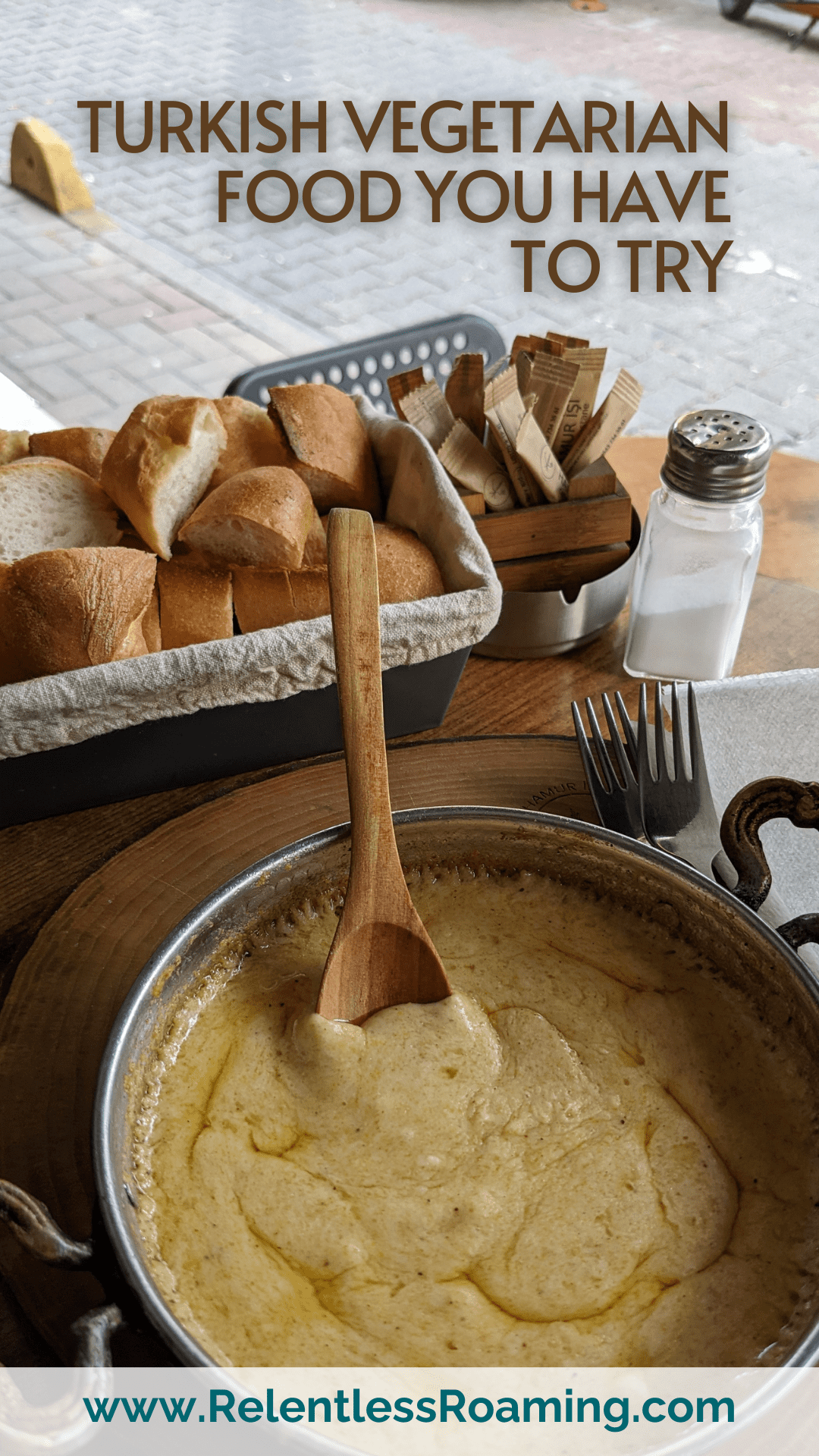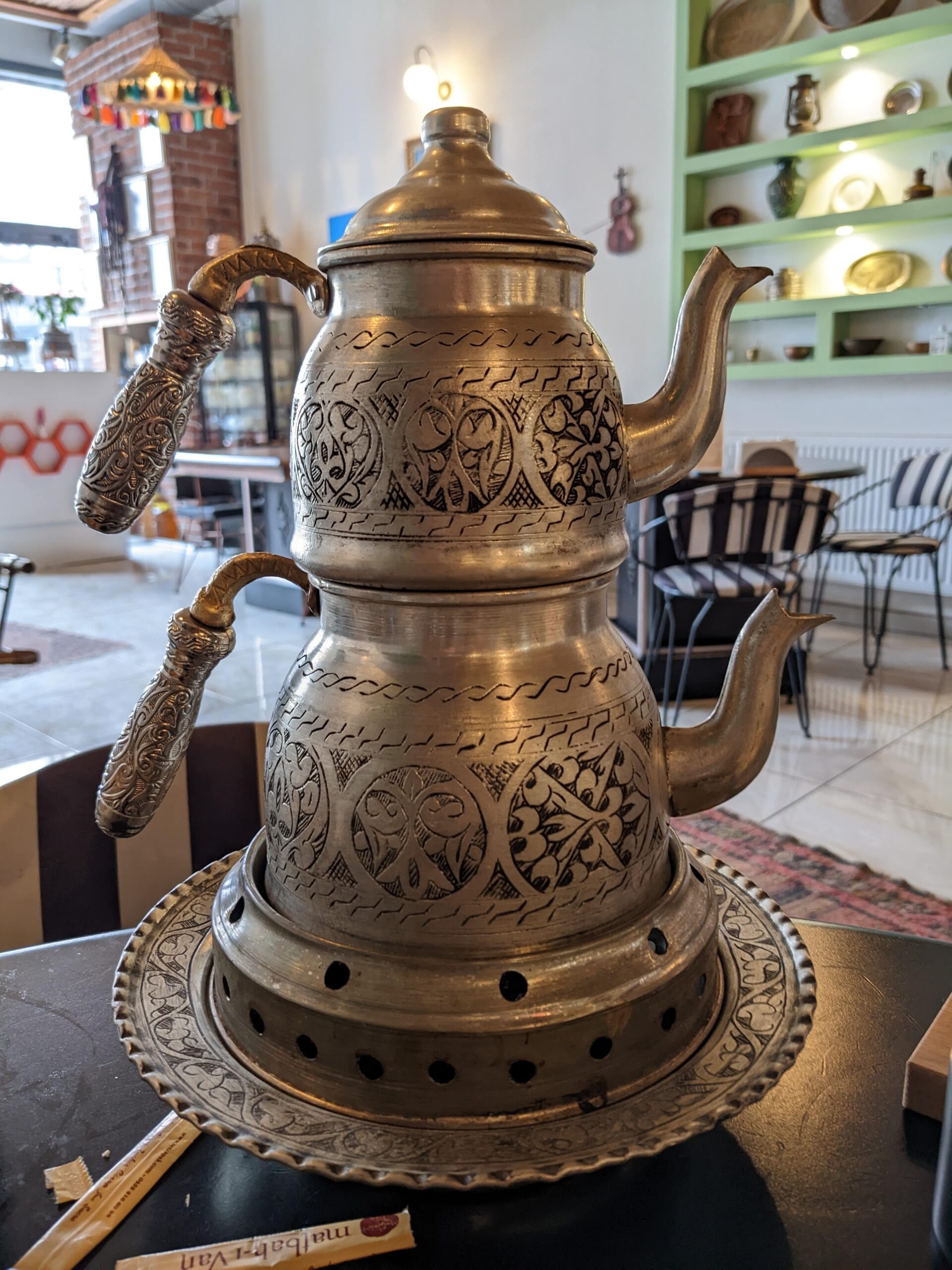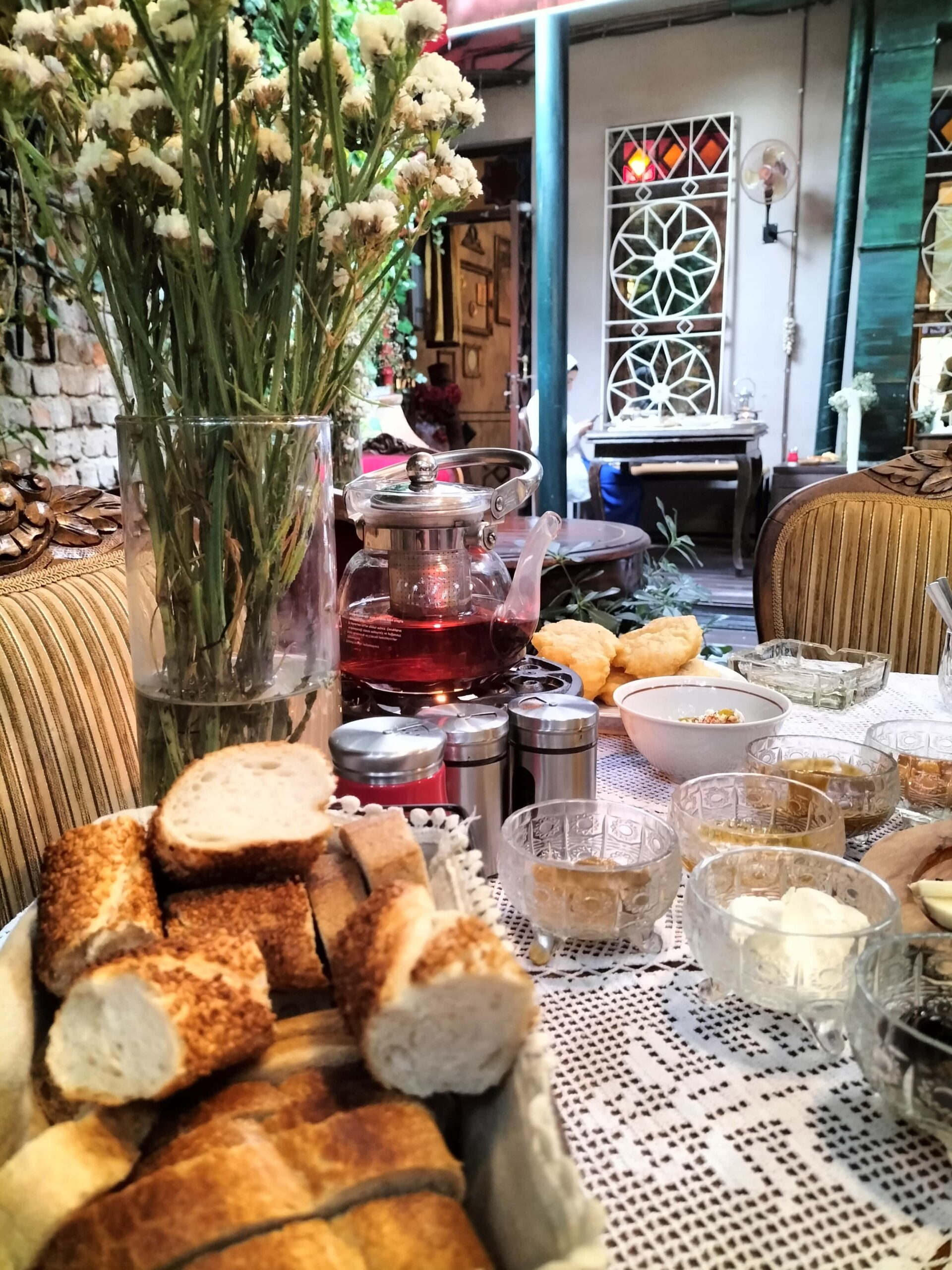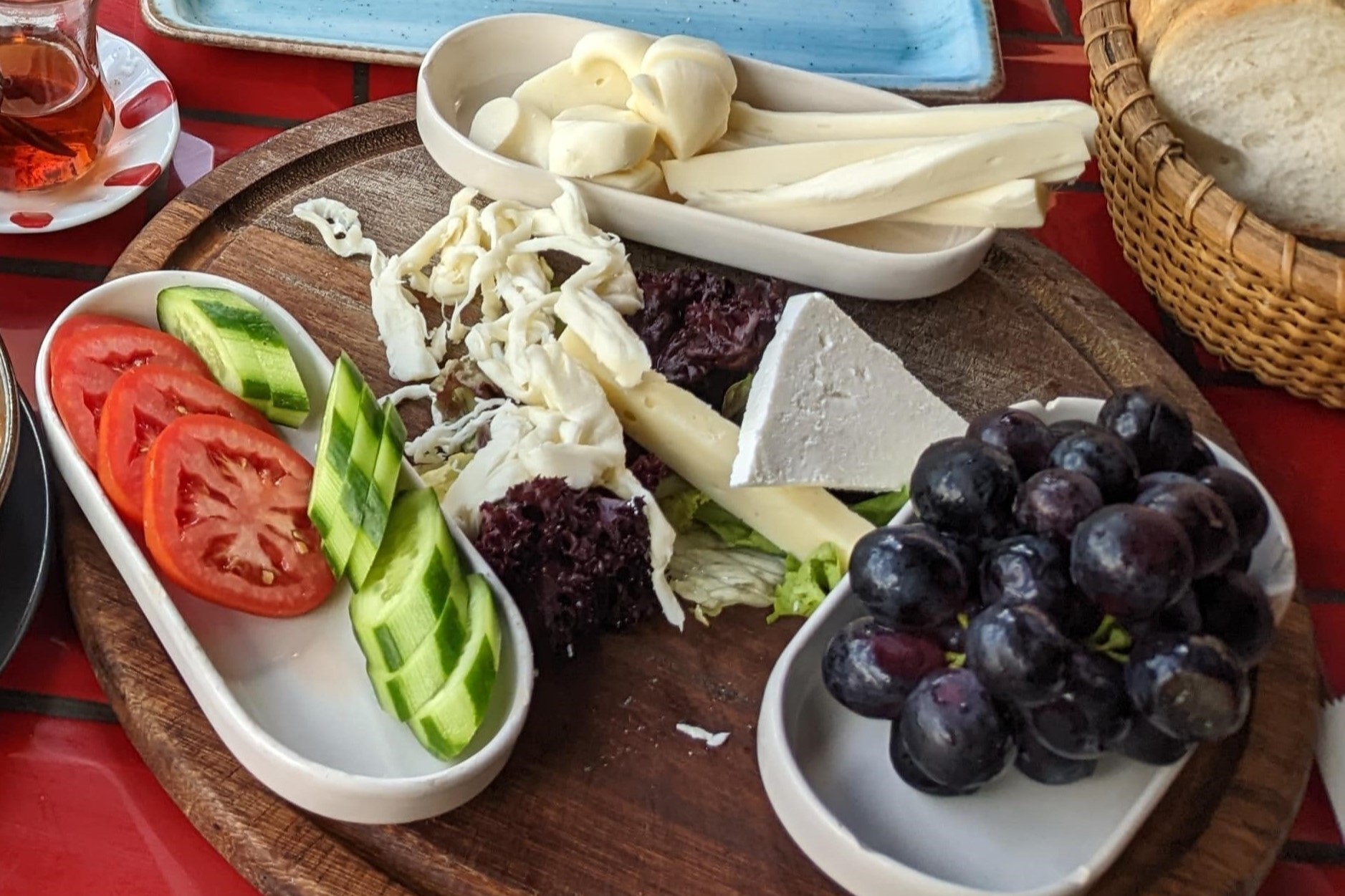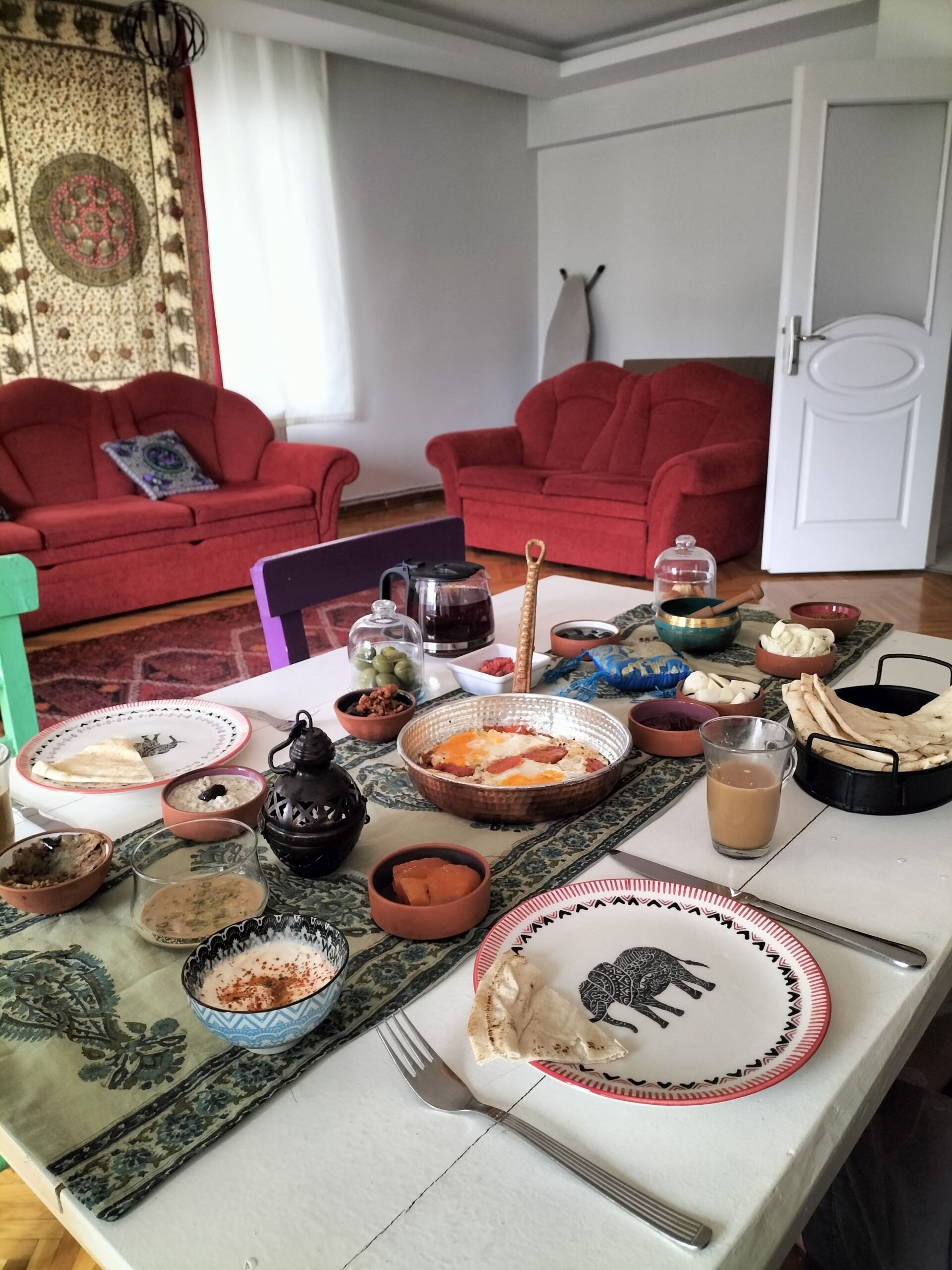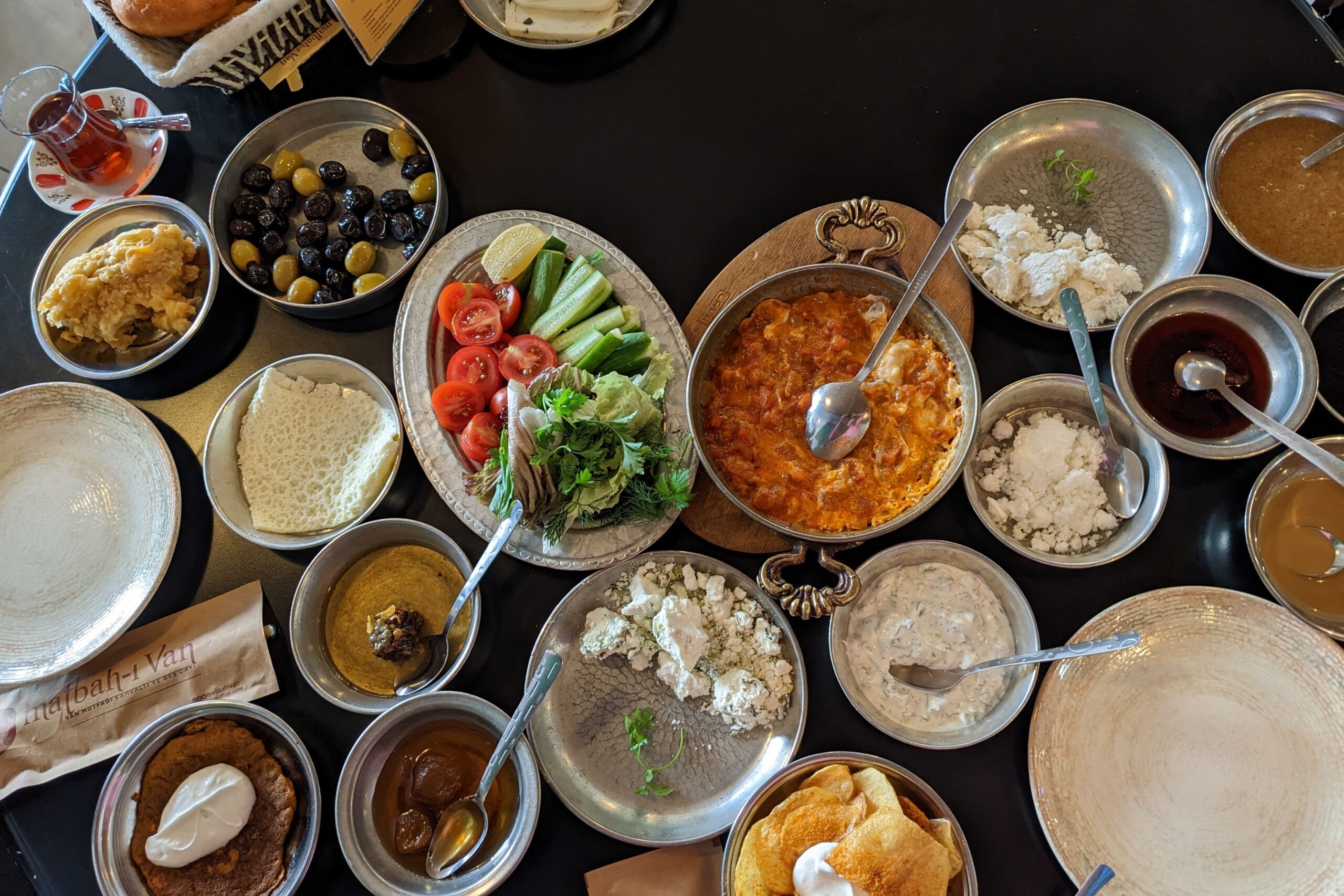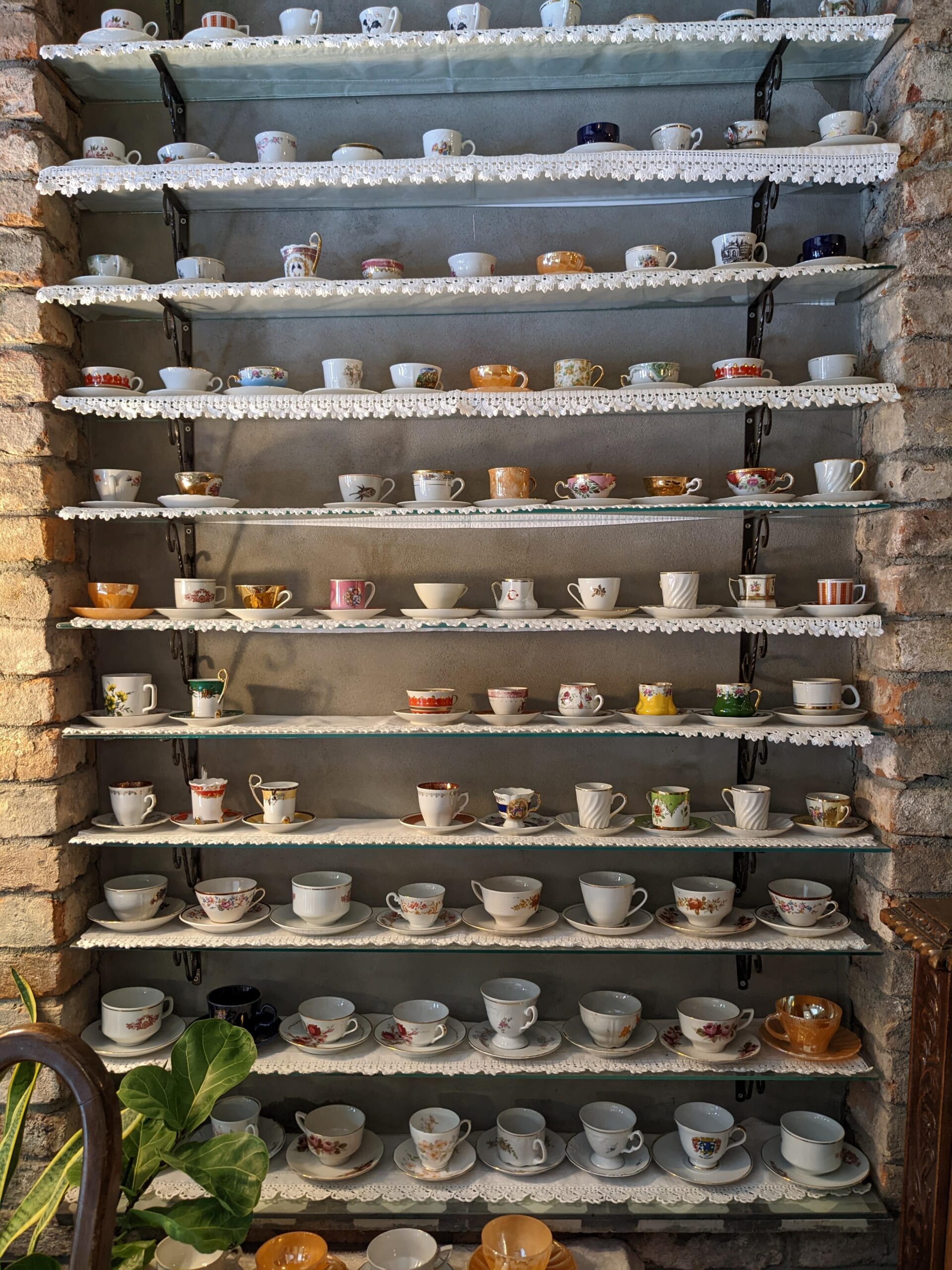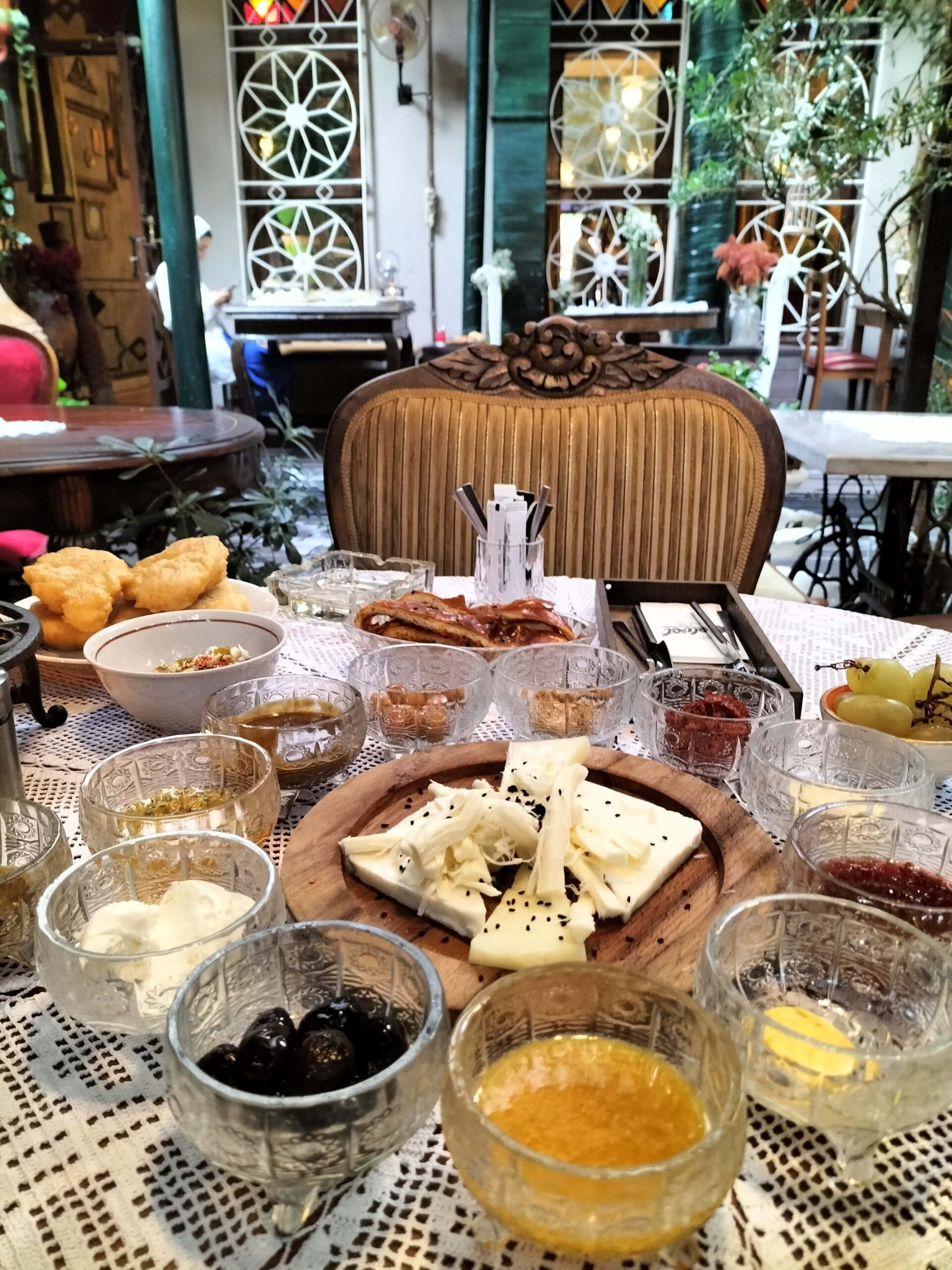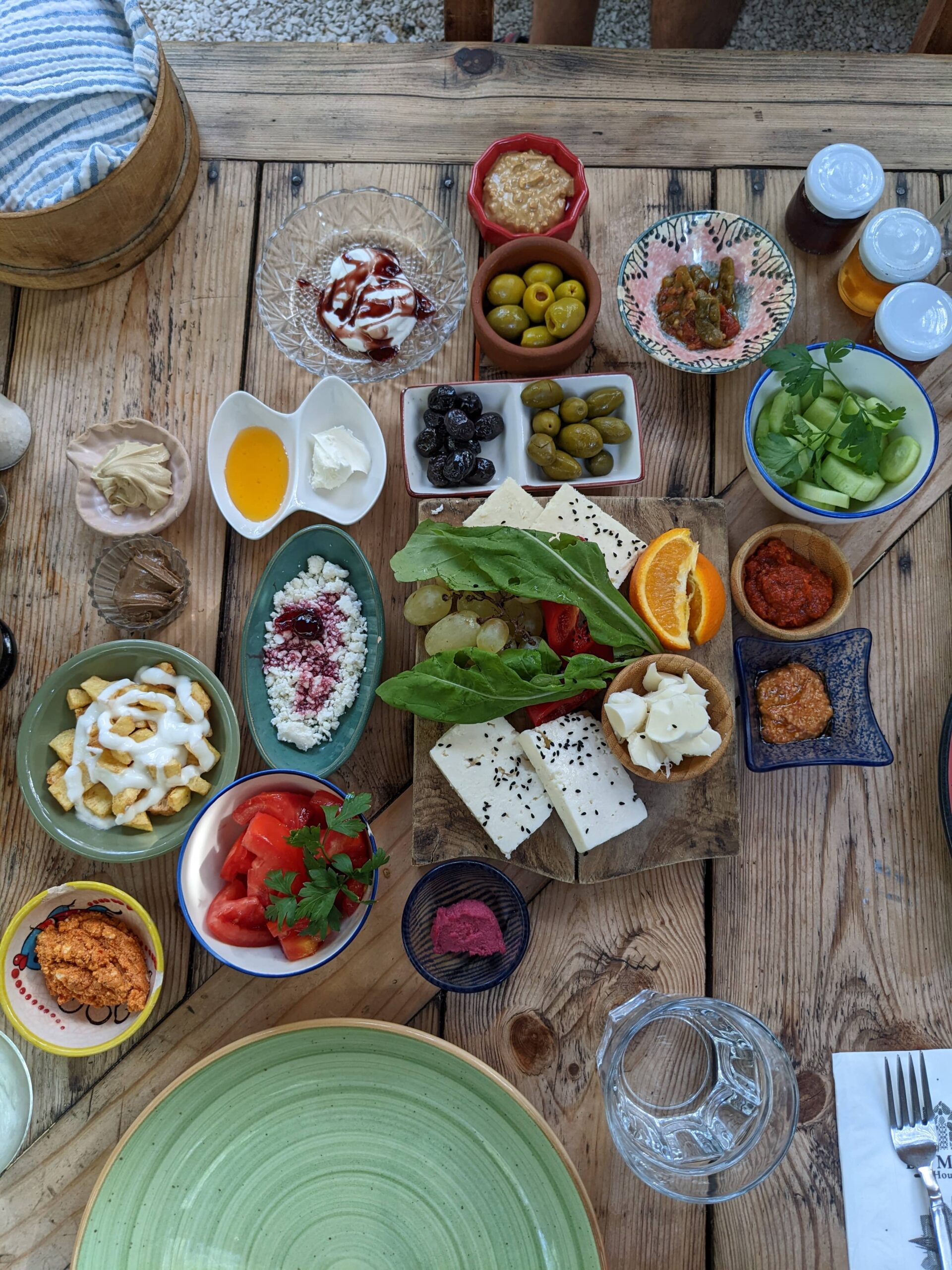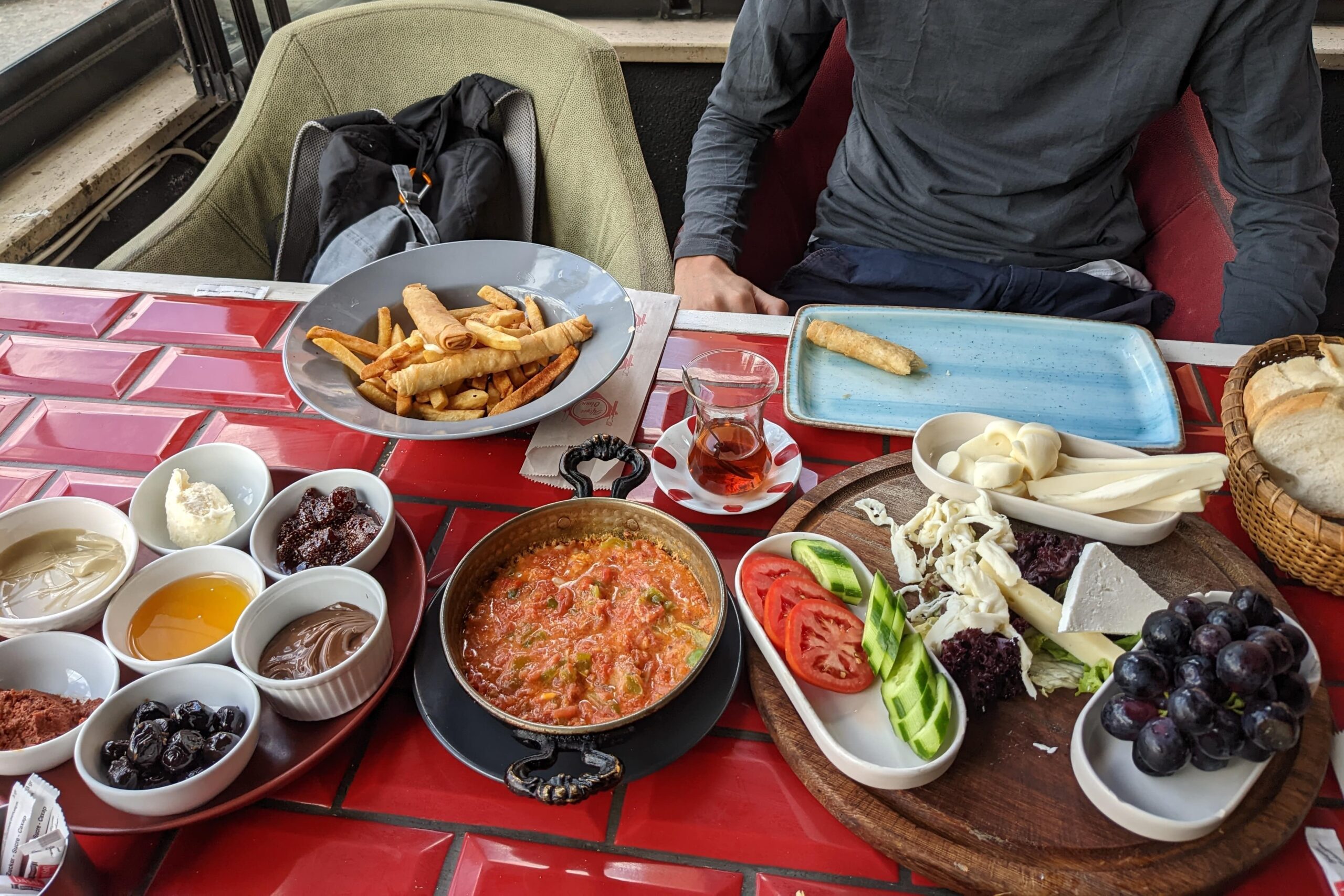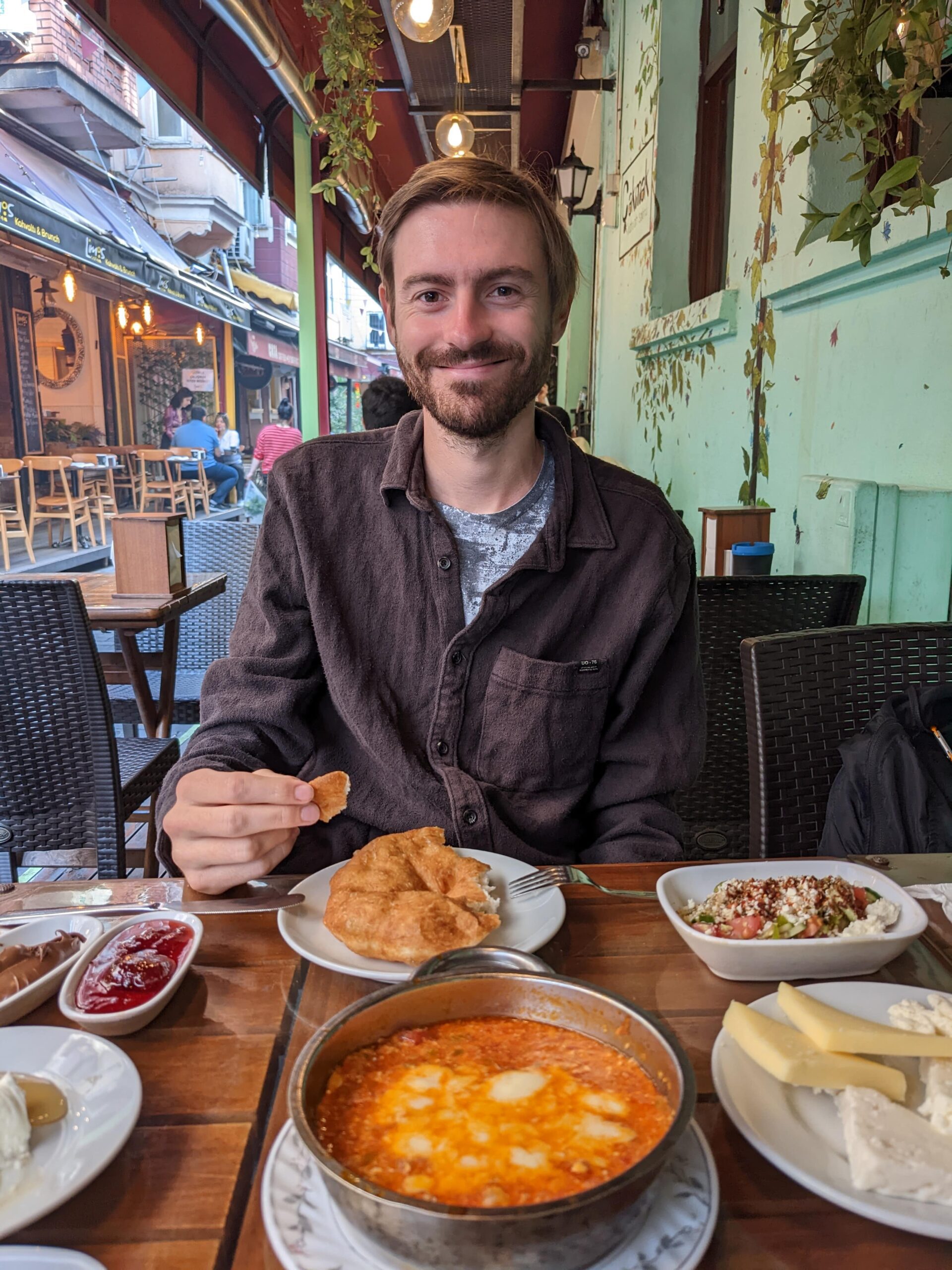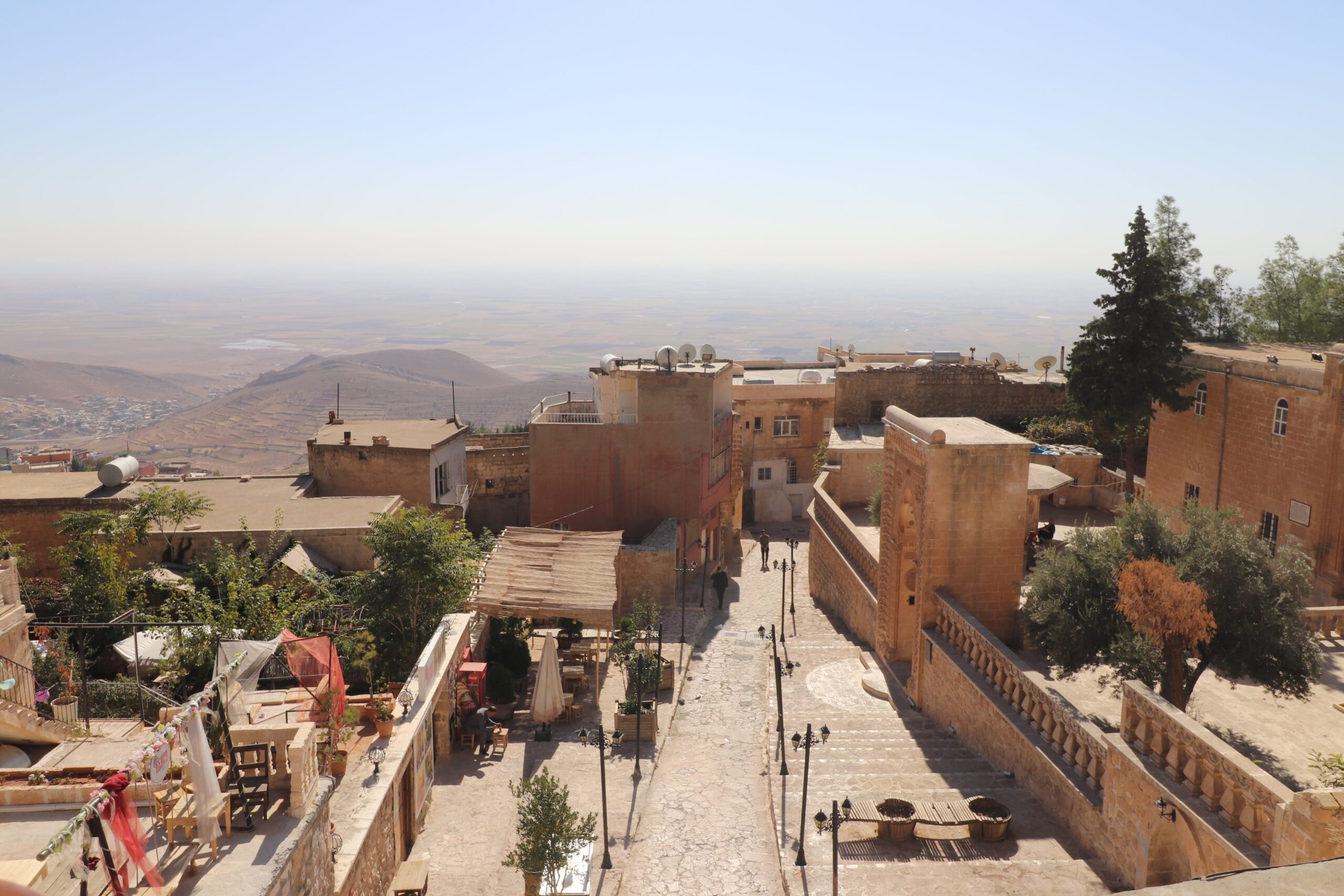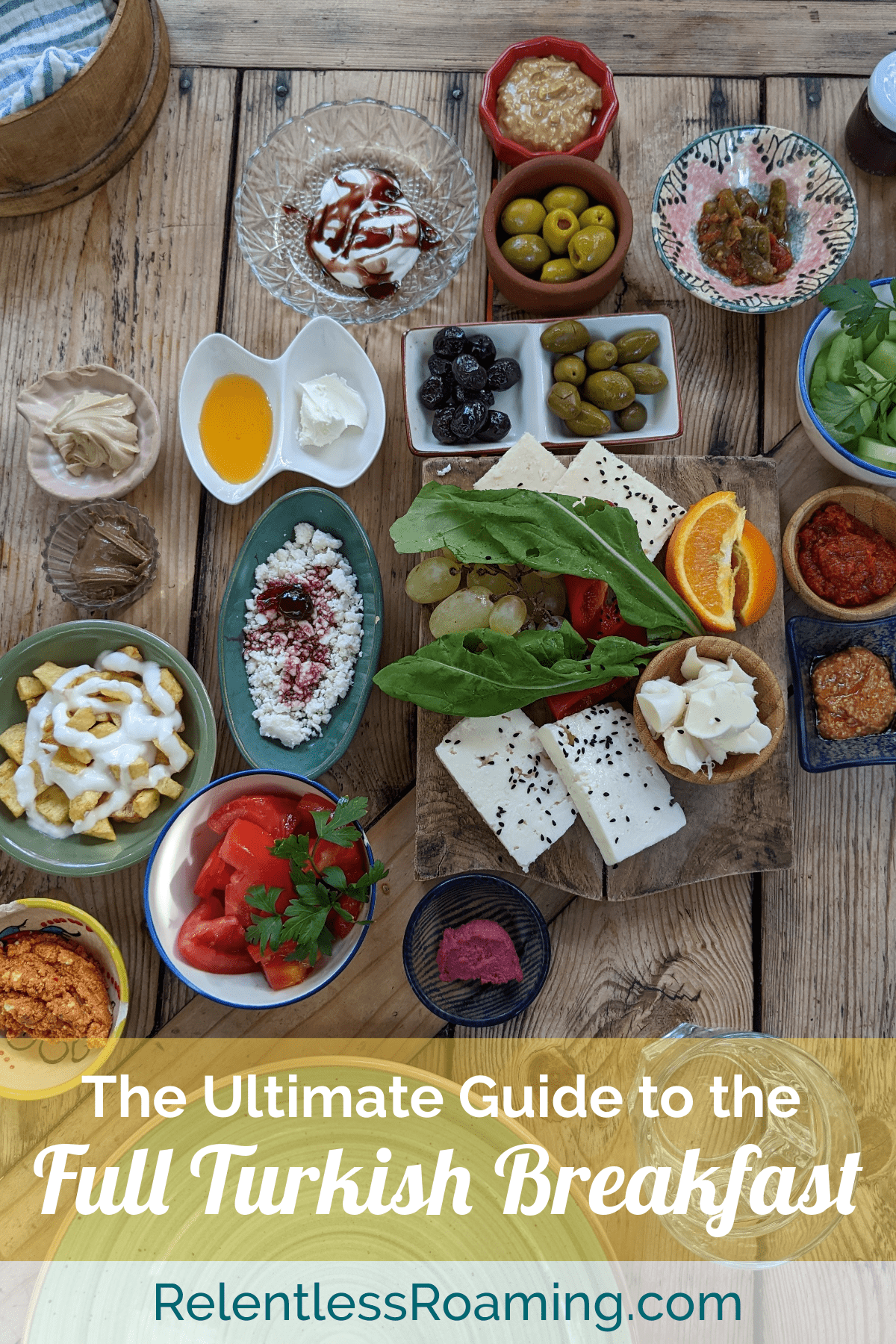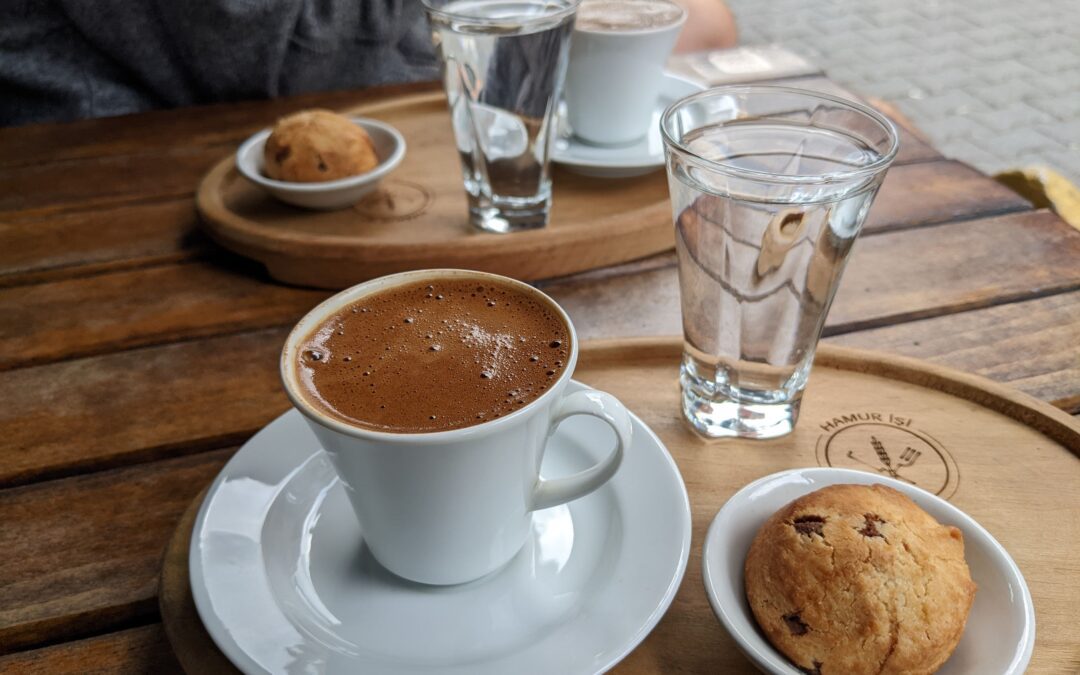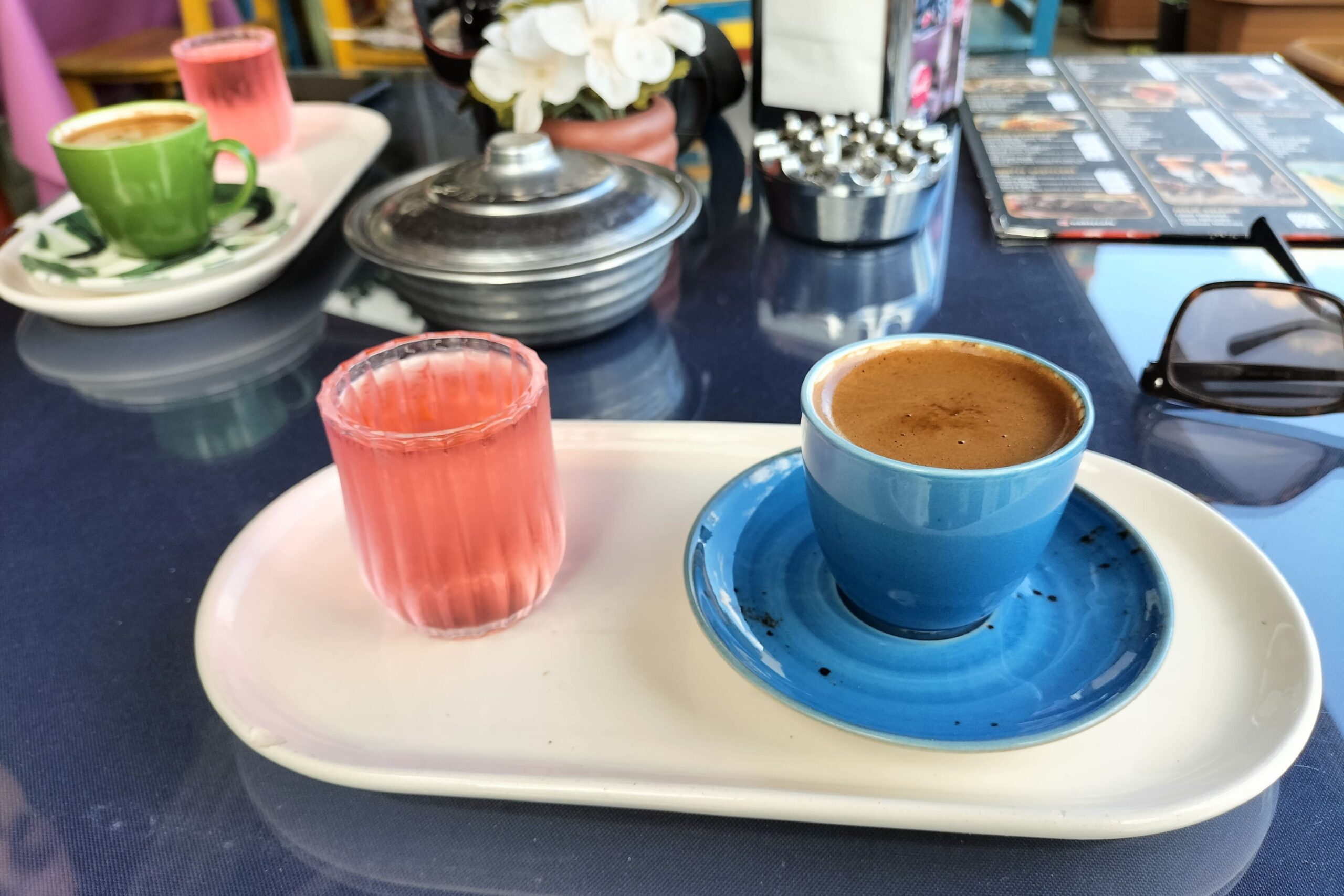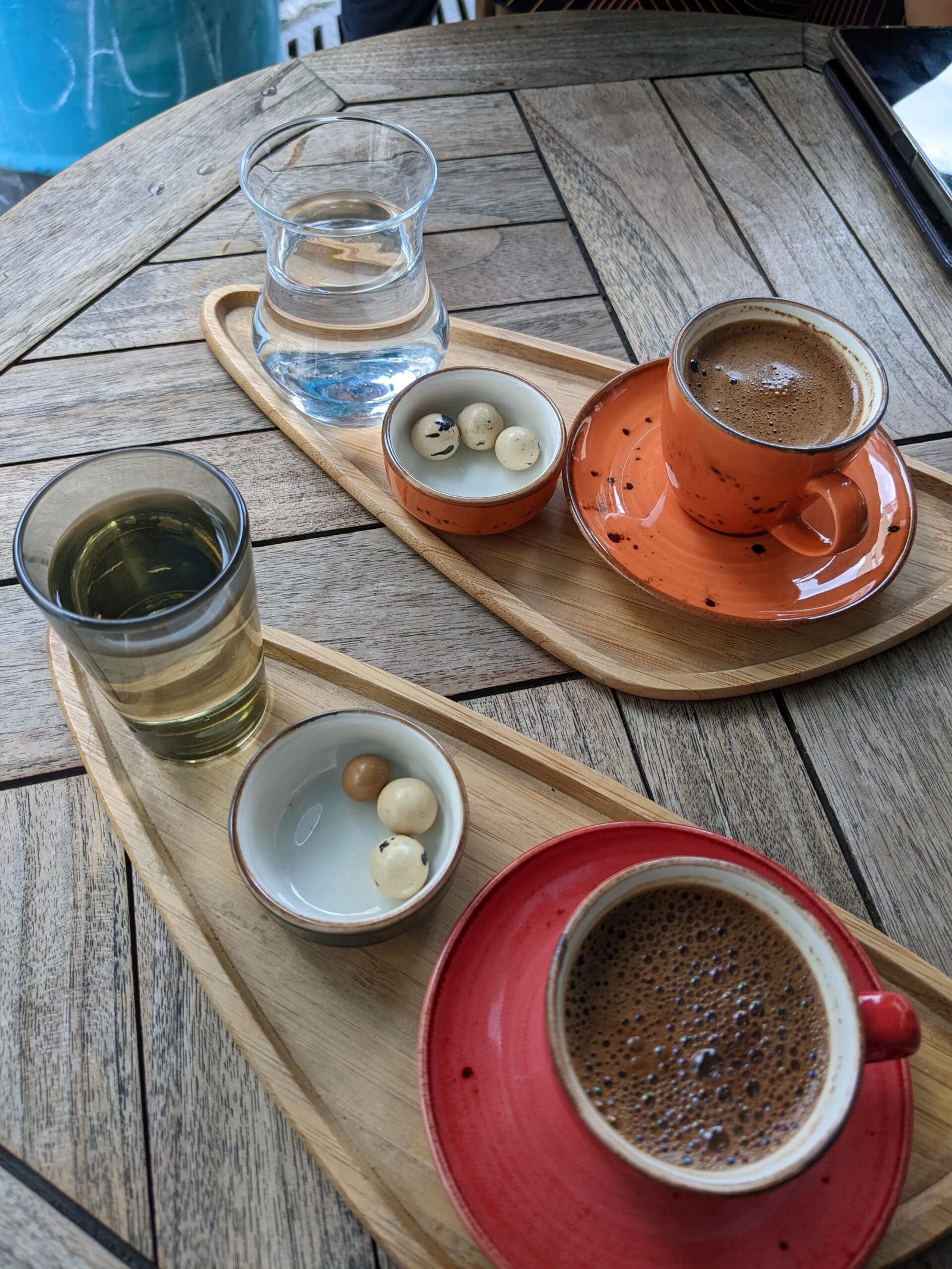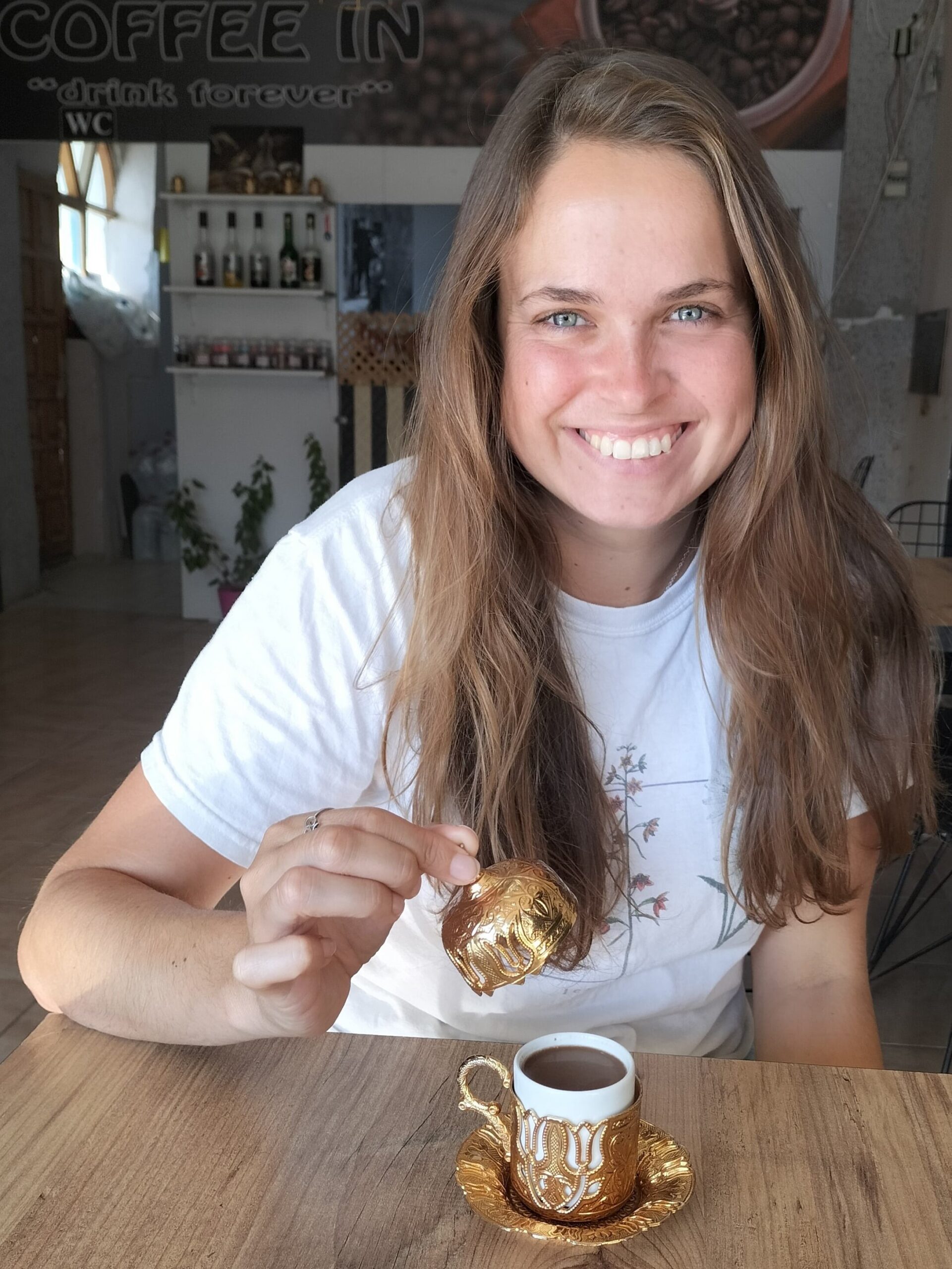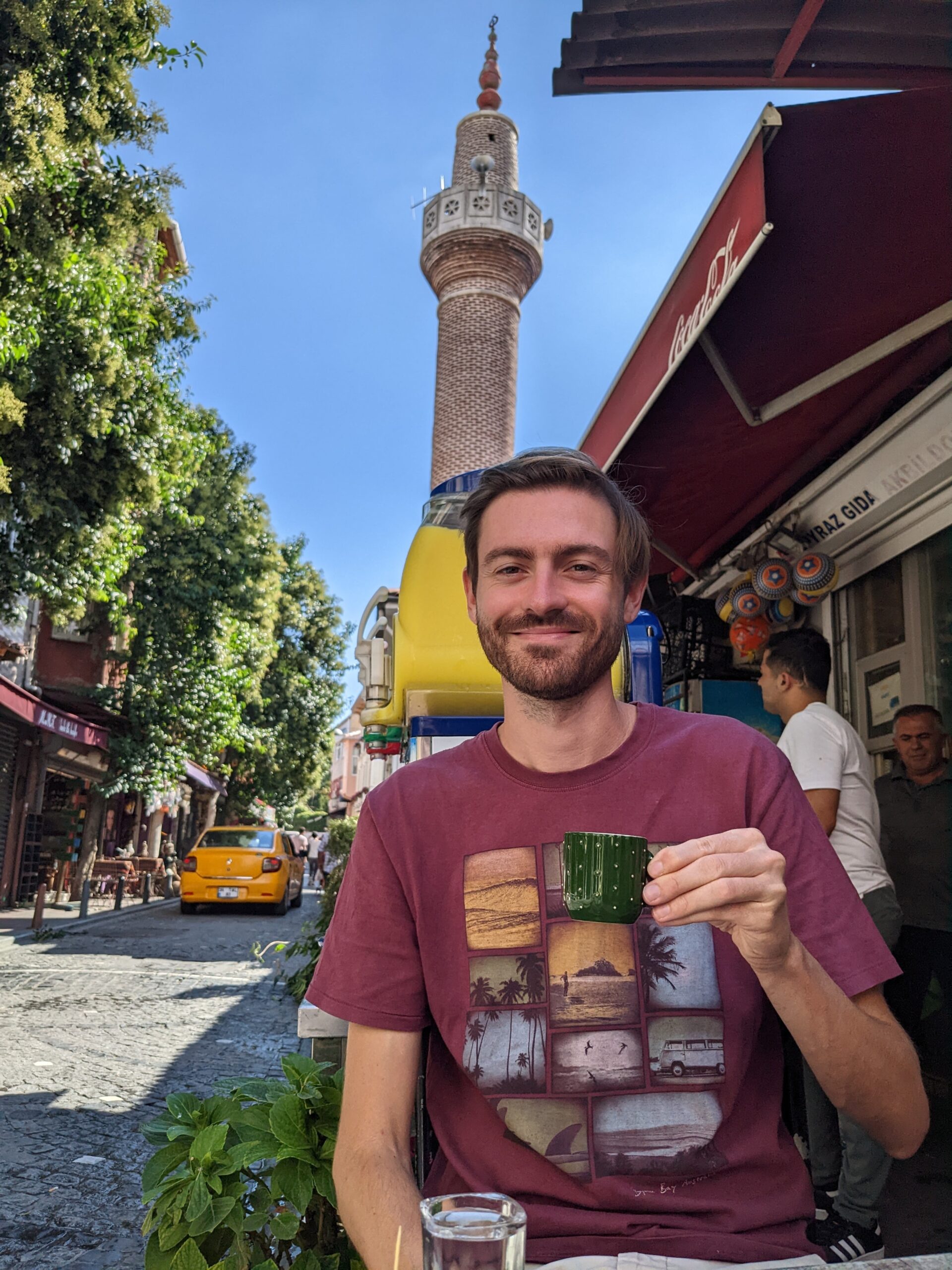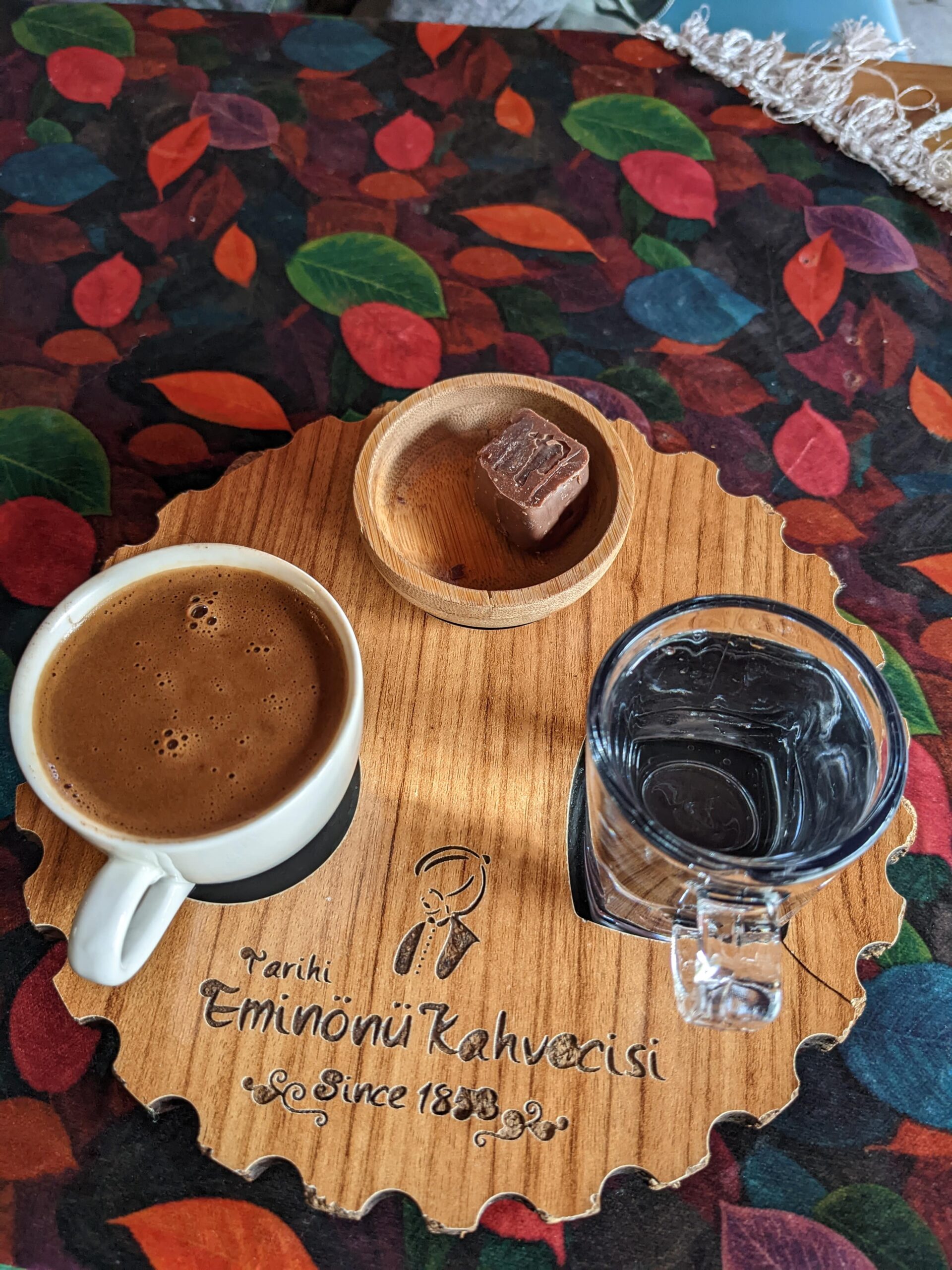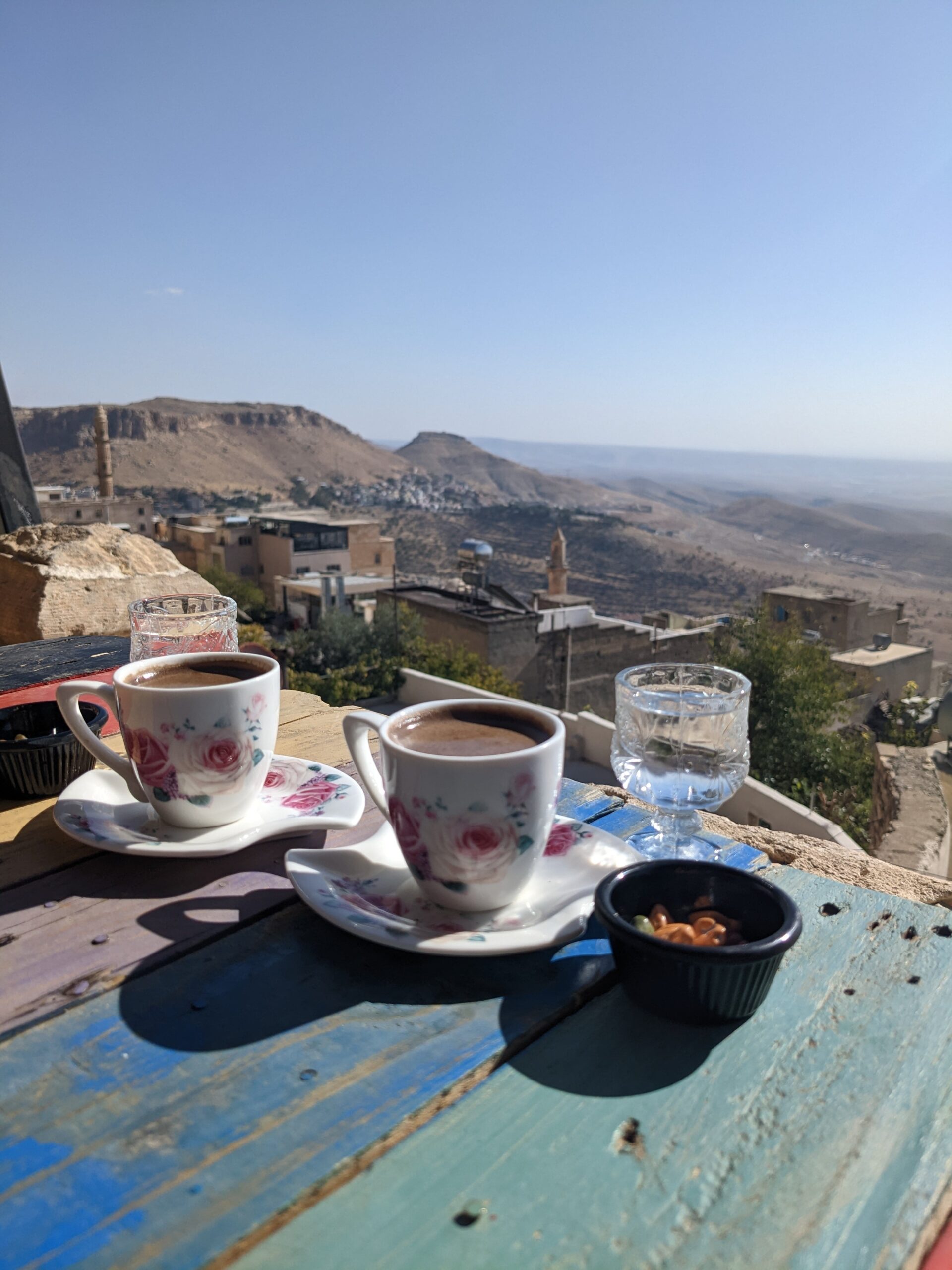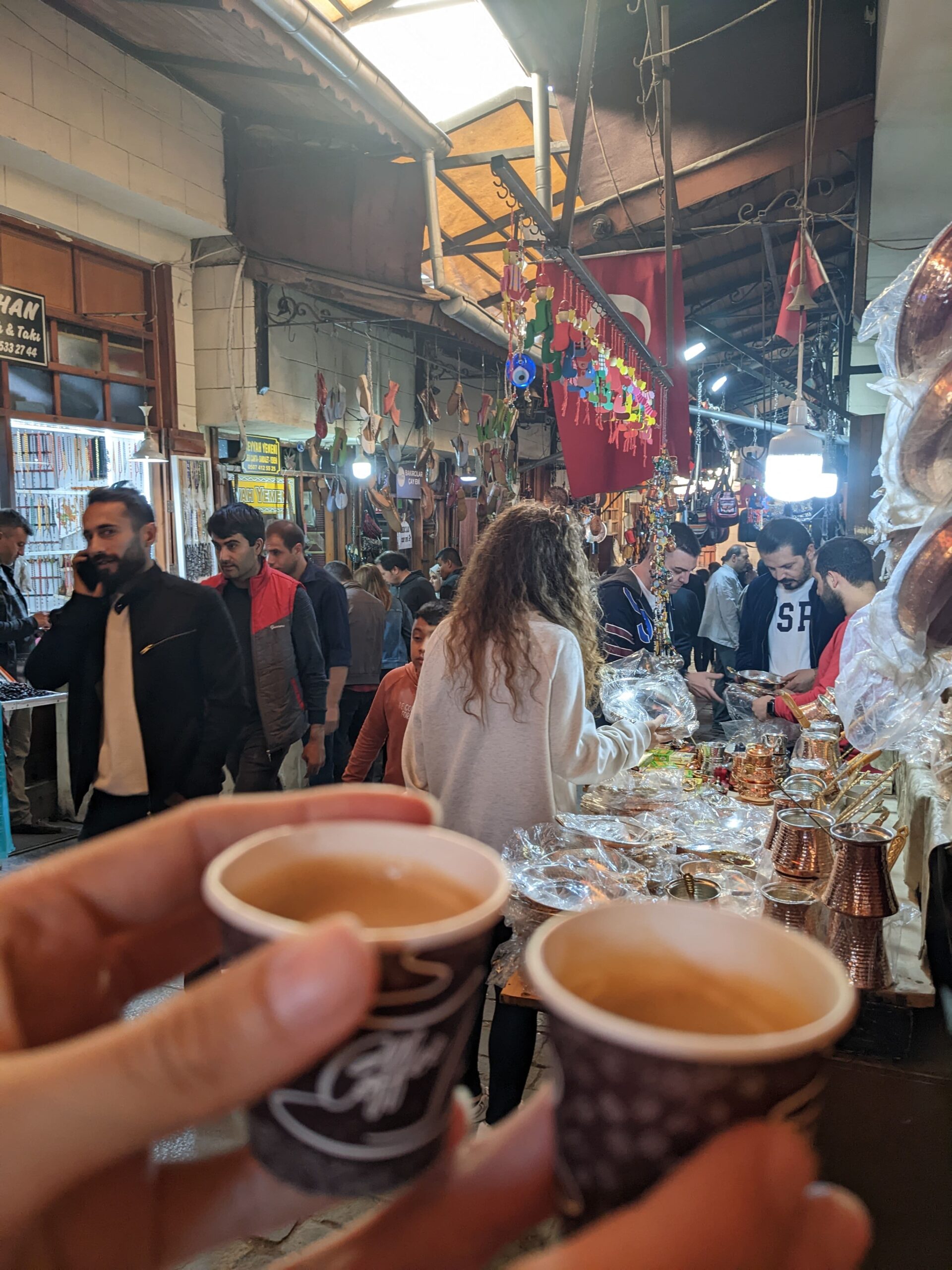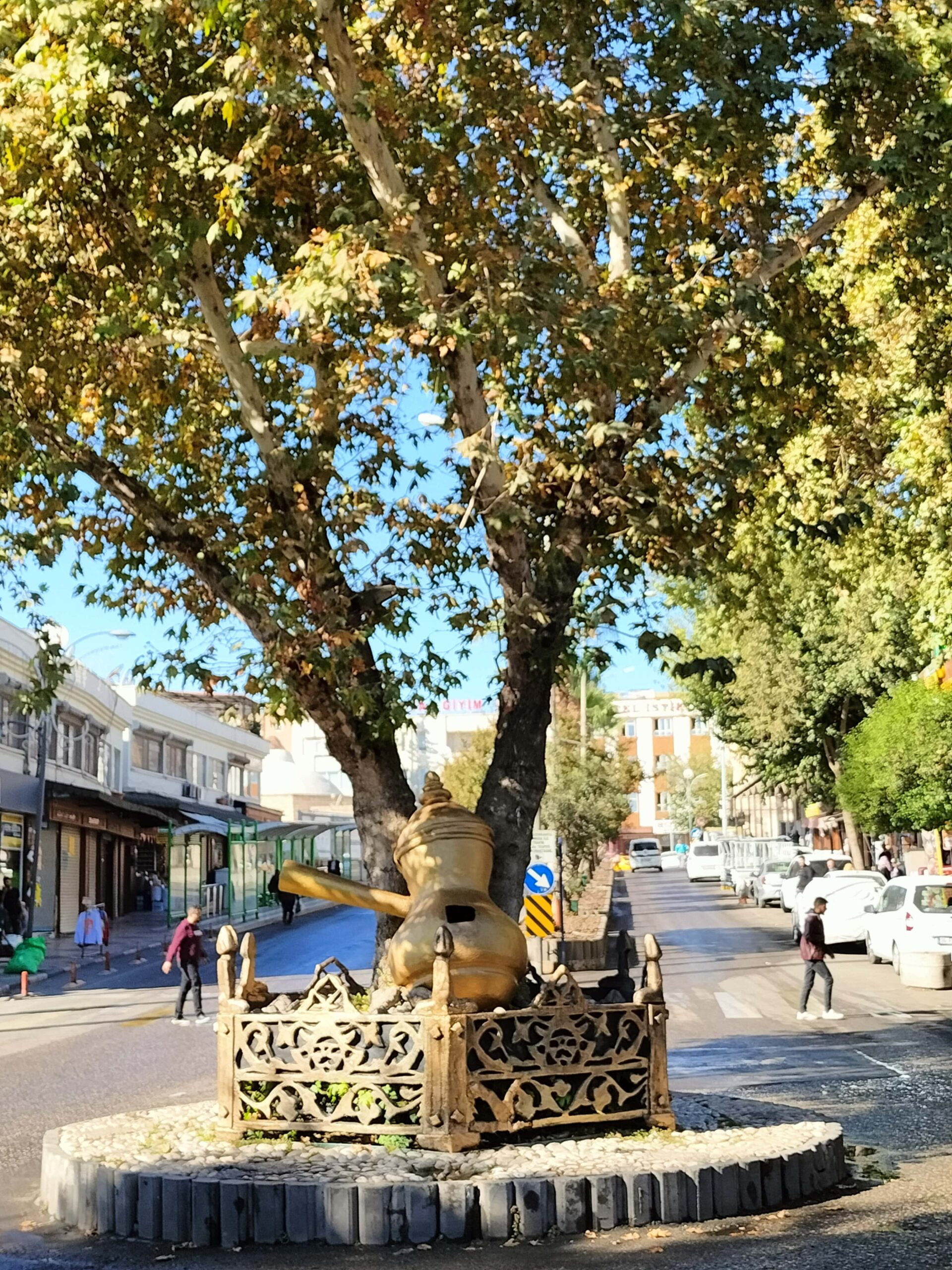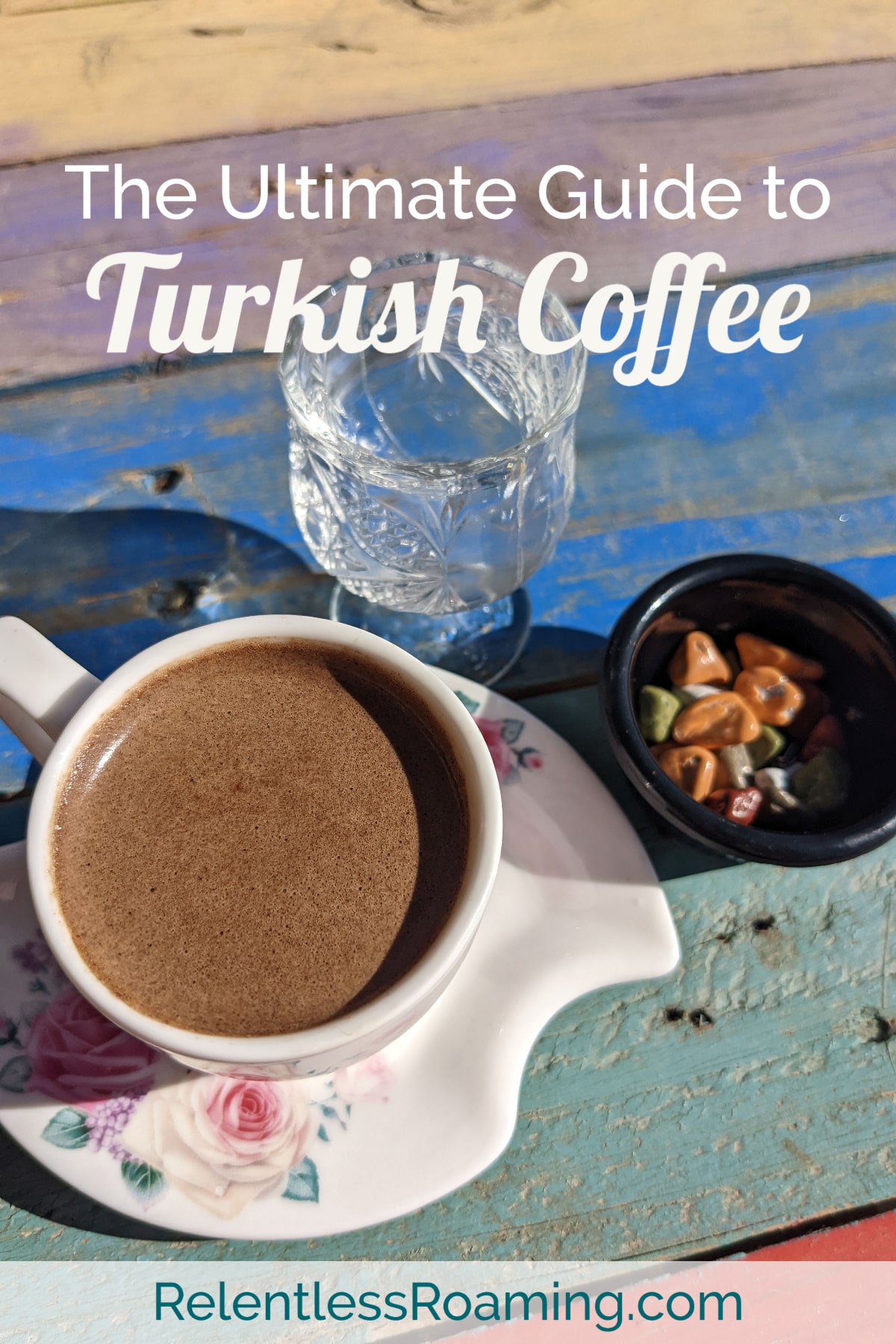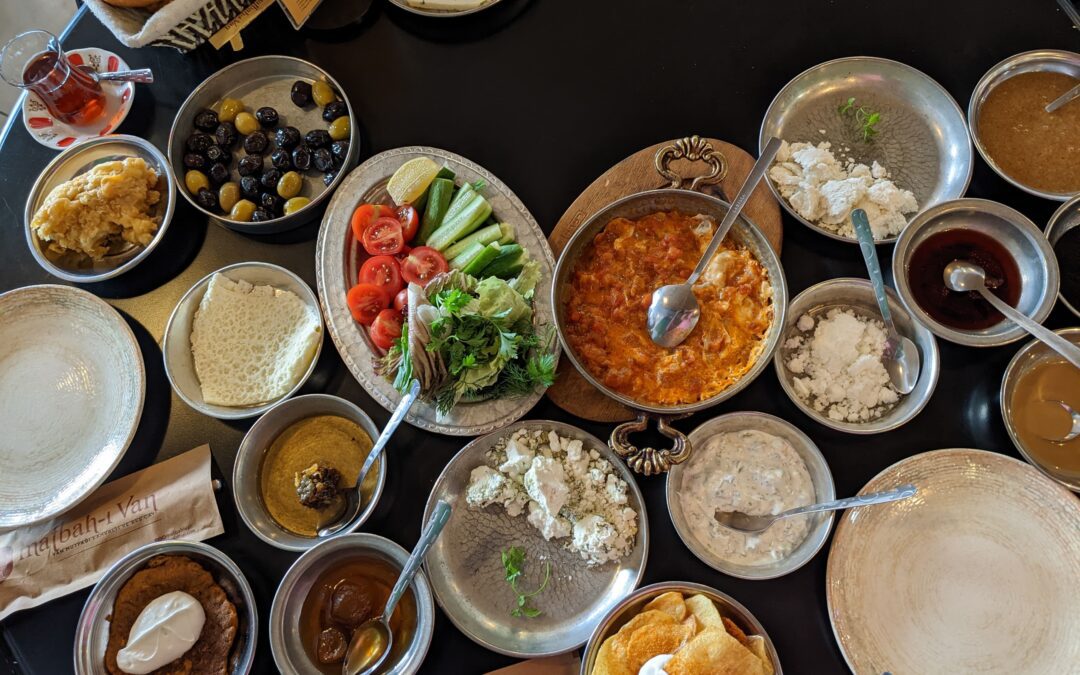
Turkish Vegetarian Food: 21 Dishes You Have to Try
Turkish Vegetarian Food: 21 Dishes You Have to Try
Turkey does some really tasty vegetarian food. Travelling for three months through the Balkans, it was a welcome change to have the hit of spice that Turkish vegetarian food brings to the table. We did find it a little difficult to find much variety of vegetarian food at restaurants (especially the further east we ventured), but what we did have, we loved. Our favourite thing to do was to have a huge Turkish breakfast spread (serpme kahvalti) that would keep us going for the whole day!
Read what to expect and recommendations of where to eat it throughout the country here.
There is a lot of sweet food; pastries, ice cream, doughnuts. It is common to have sugar in your tea and coffee too.
Loosen your belt (I’ve definitely had to move the prong of my belt buckle down a notch since visiting Turkey!), and get ready for all the Turkish vegetarian food this beautiful country has to offer.
Disclaimer: This blog post may contain affiliate links. If you click and purchase through an affiliate link, we may earn a small commission at no extra cost to you! This just helps us to continue creating blog posts. We will only ever recommend products and services that we have tried and loved ourselves.
Turkish Vegetarian Food: 21 Dishes You Have to Try
Try Out Our Favourites!
Menemen
The classic. Onions, peppers, tomatoes are cooked into soft scrambled eggs. Eat with some bread and a few cups of cay. Mainly served as breakfast, but can be eaten throughout the day.
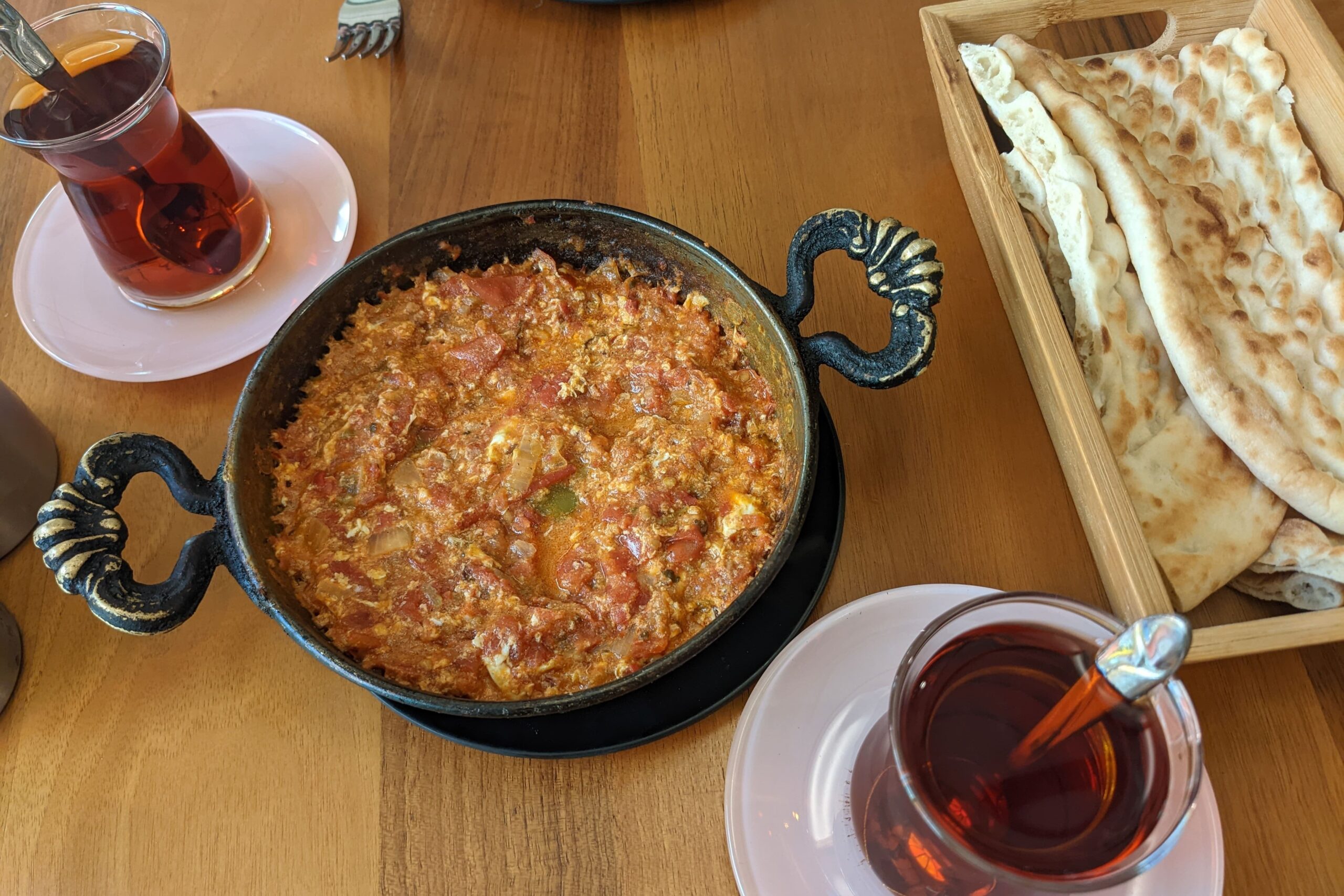
Scrambled Eggs with Alacati Herbs
Now, I doubt this is a mainstream breakfast, but it deserves a special mention. Avula in Alacati serves a big portion of perfectly seasoned scrambled eggs full of local herbs and it is beautiful.
Cig Kofte
Originally made out of room temperature raw minced meat, cig kofte was making a lot of people sick. Nowadays, the majority of cig kofte that you will find, is made with a vegan alternative of bulgur wheat. The grain is kneaded with salt, spices, tomato and pepper pastes and pomegranate syrup. It can either be served with dipping sauces or wrapped up in a flatbread with mint, parsley and salad.
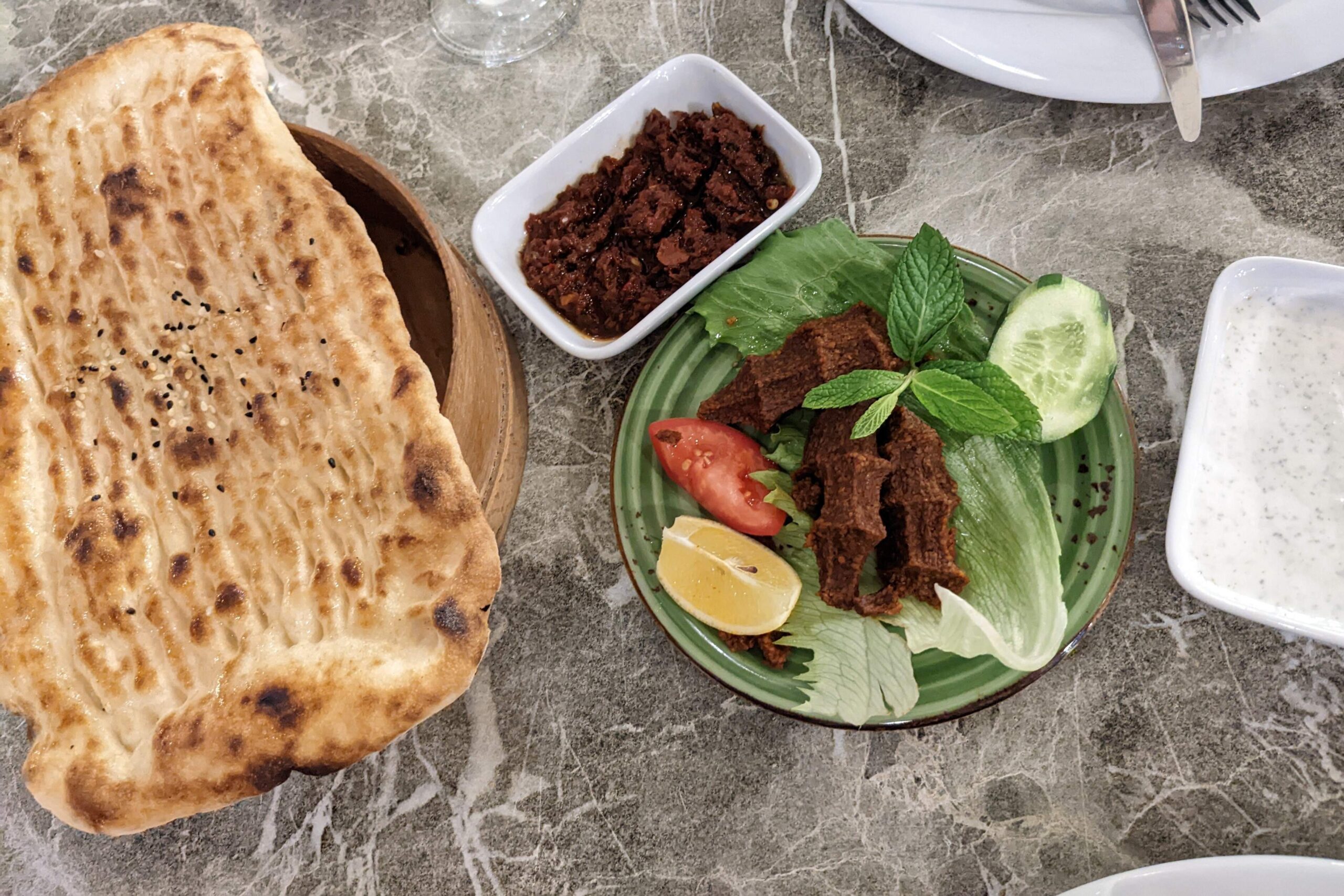
Muhlama
Found mainly in the northern parts of Turkey, this is a rich and gooey cheese fondue style meal. It is made from butter, cornmeal and cheese and is served with bread. This is a perfect breakfast when it’s a little cooler outside and you need something warming and comforting.
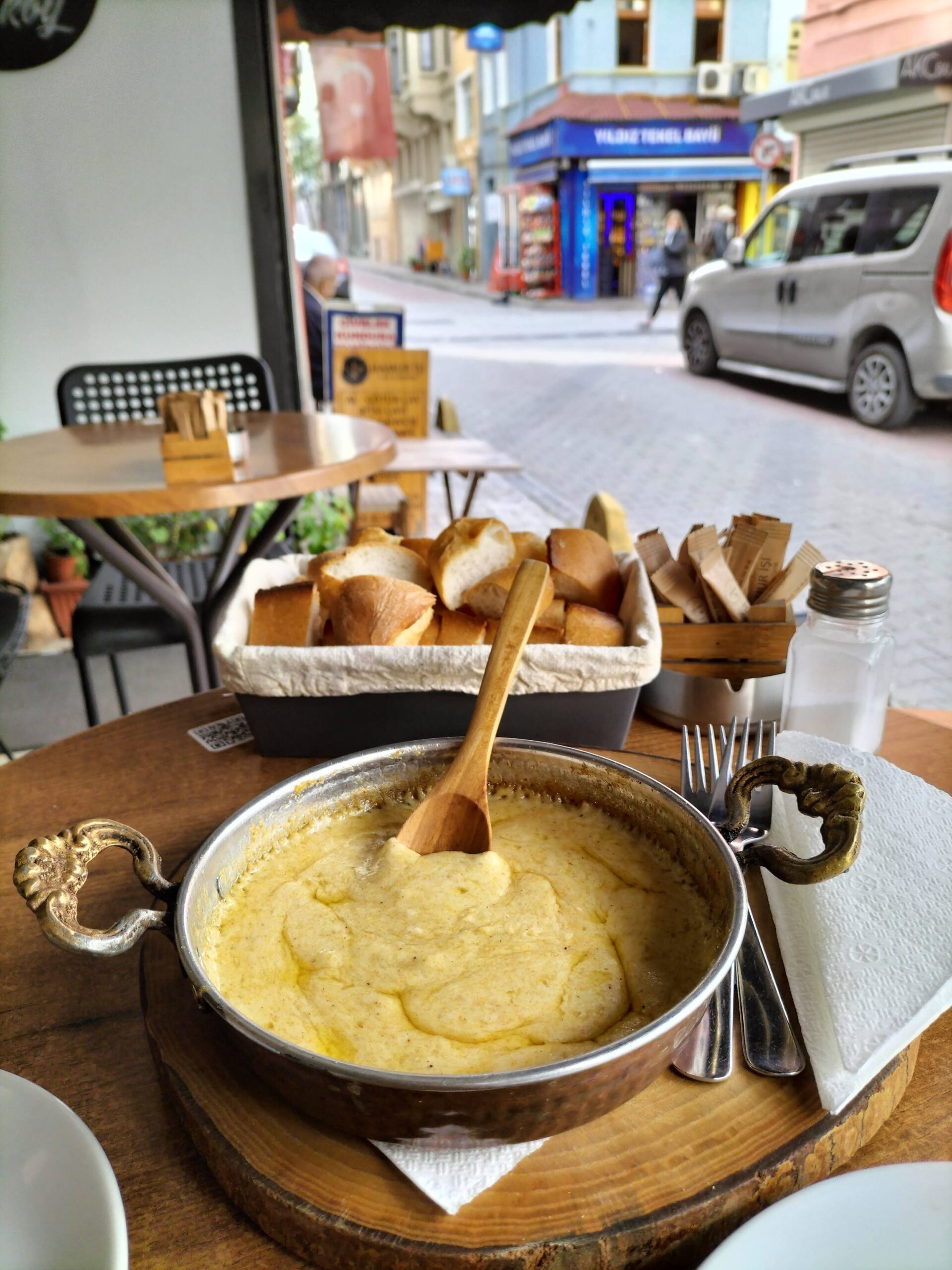
Gozleme
Traditional Turkish pancake which is generally savoury, though we did find one sweet version. Often filled with potato, spinach or cheese, the pancake is folded into a package and then fried on a domed plate. We had a tahini, walnut, grape molasses and brown sugar, and it was our favourite gozleme from our entire six-week trip through Turkey. Find it here at Yavuz’s Restaurant in Selcuk, just outside Ephesus Ancient City. There is a small room off the side of the restaurant where you can see the gozleme being made by hand.
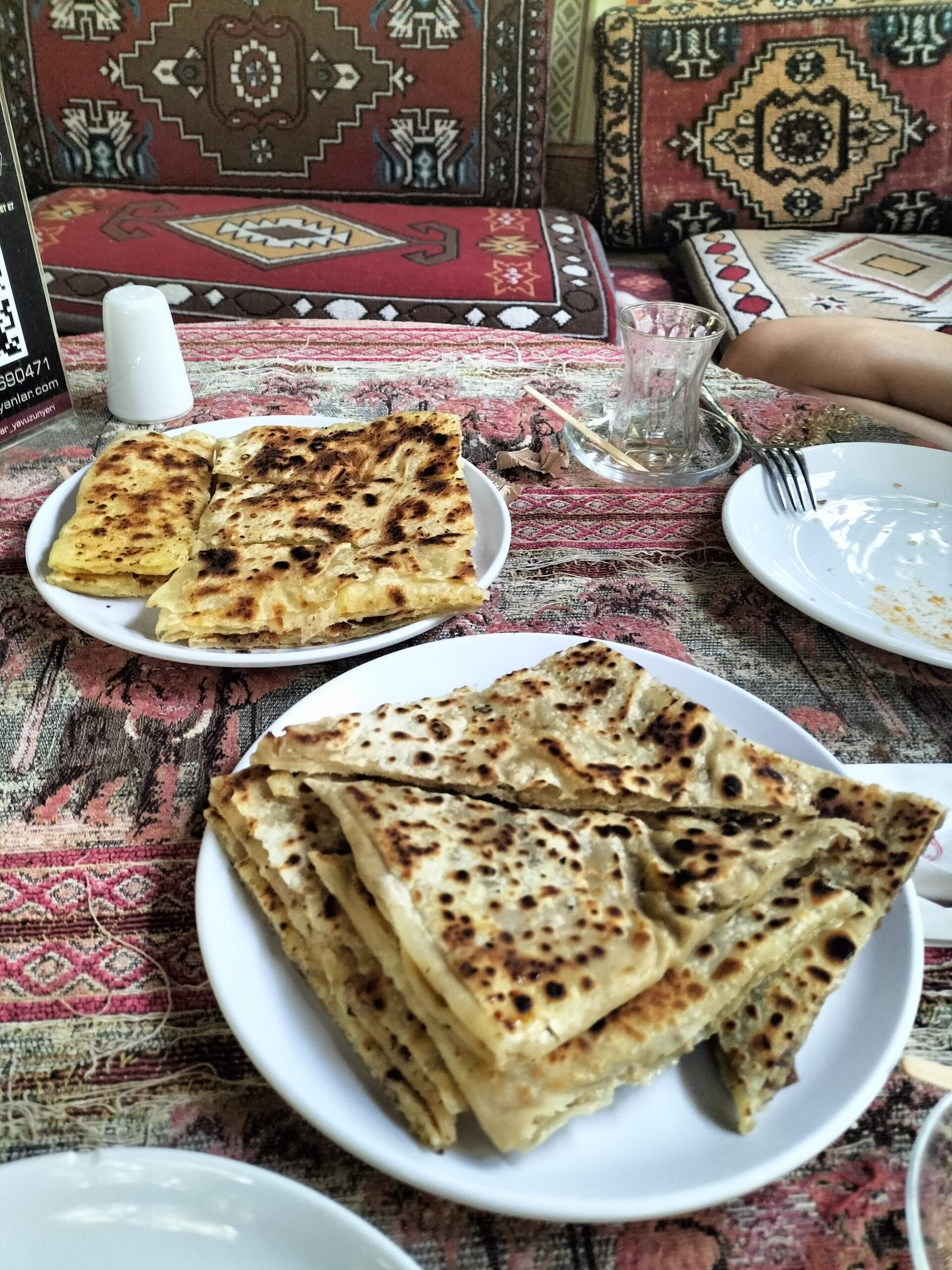
Lentil Soups – Mercimek Çorbası and Ezogelin
Mercimek is a gentle lentil soup which is hearty and warming. Ezogelin is similar but has more spicing to it.
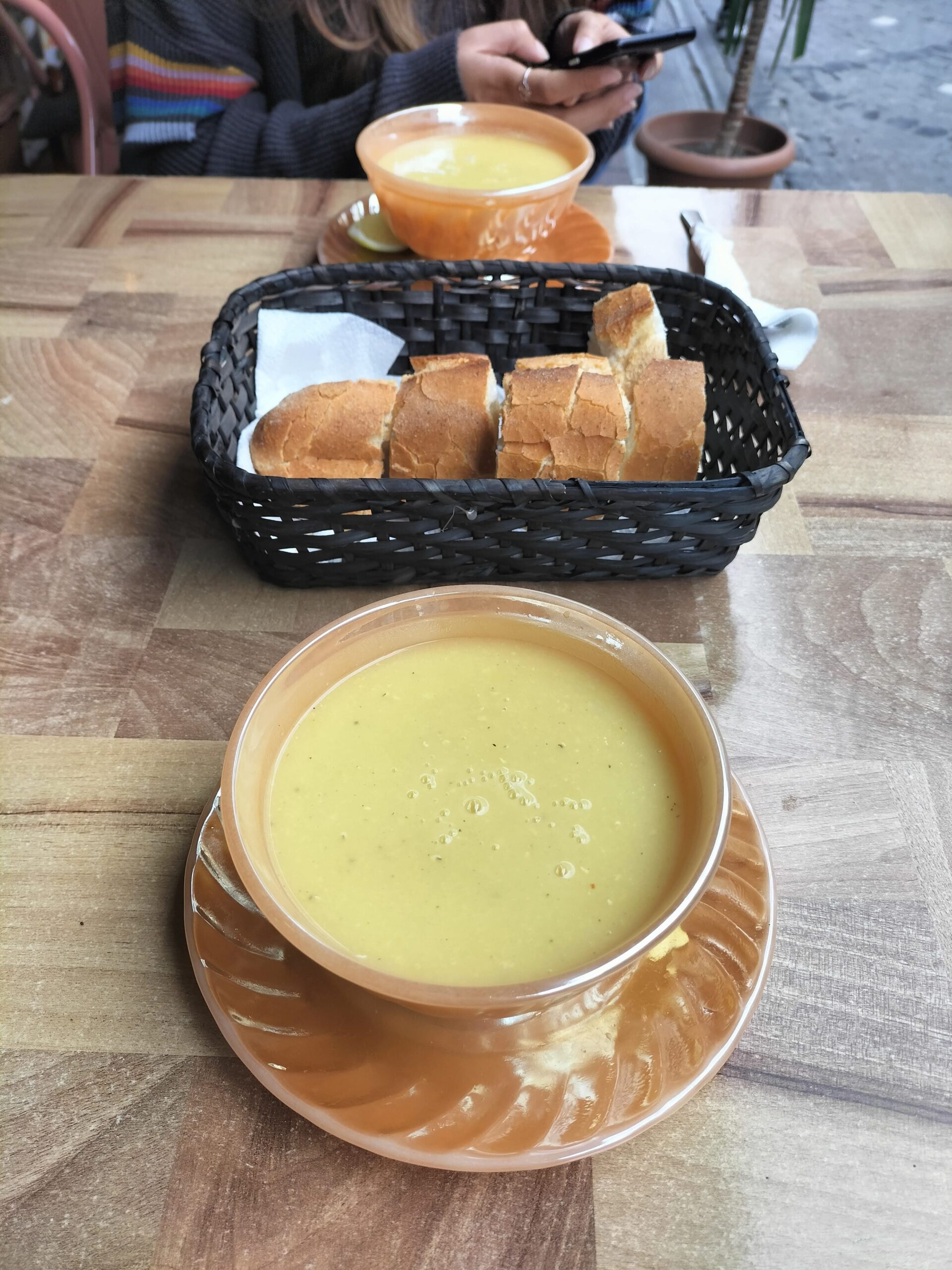
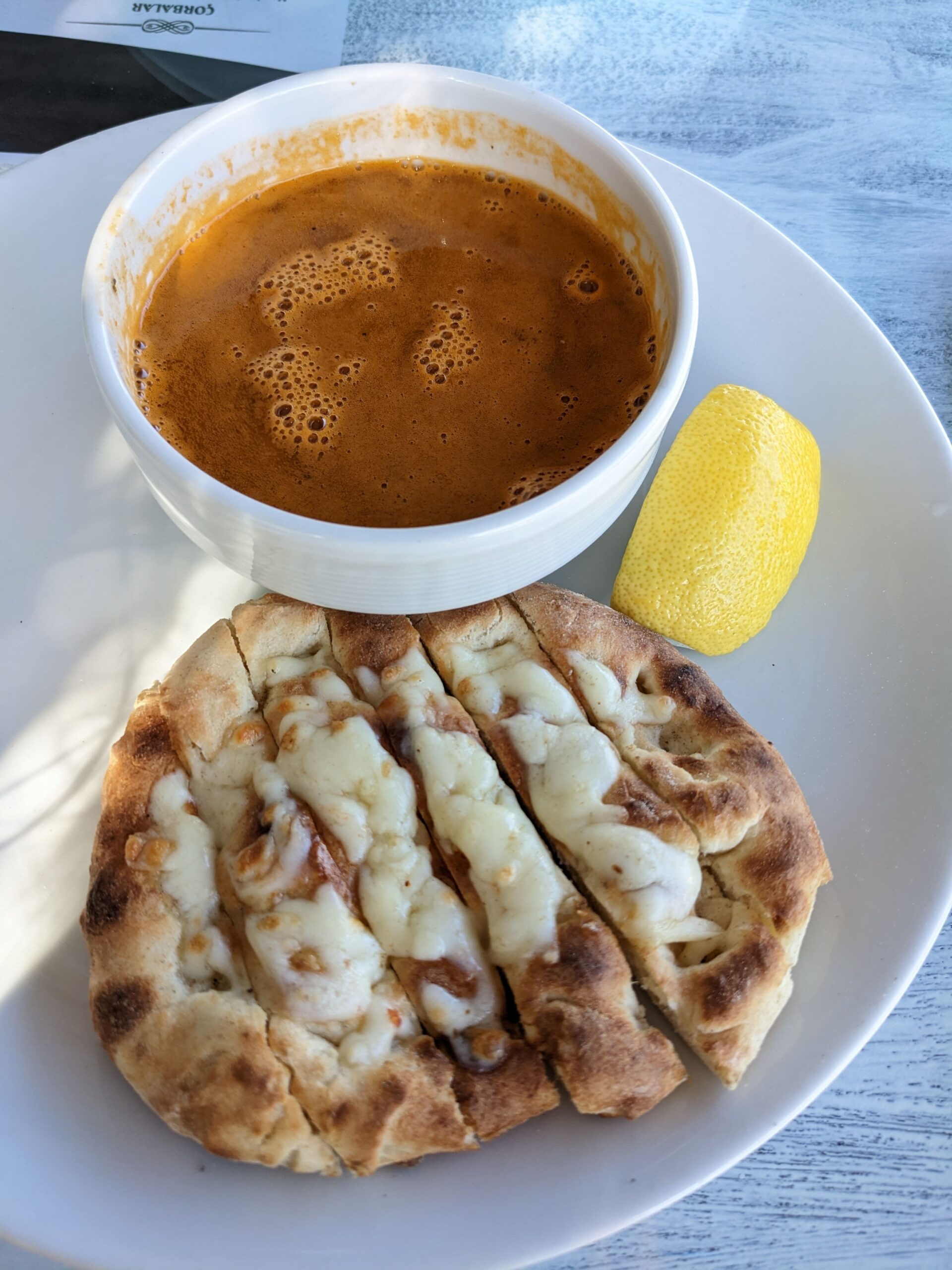
Pide
Known as Turkish pizza, pide is bread flattened and topped with cheese, mushrooms, veg, eggs, meat before being baked. You’ll be able to find several vegetarian options of pide.
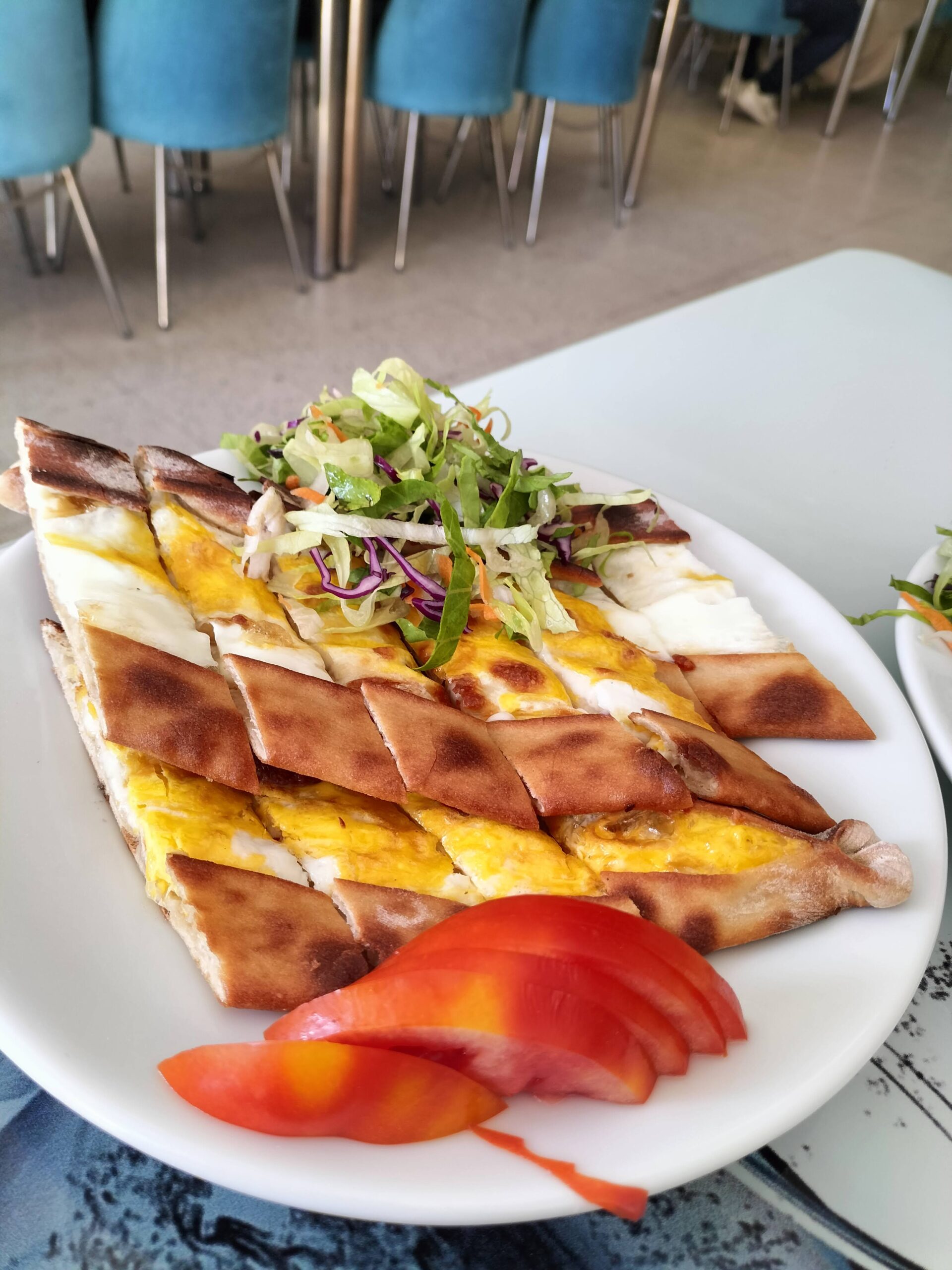
Simit
Simit is a bagel topped with sesame seeds. It is very often eaten as a snack or breakfast with some cay. You will find simit everywhere from restaurants, to simit stands to onboard ferries.
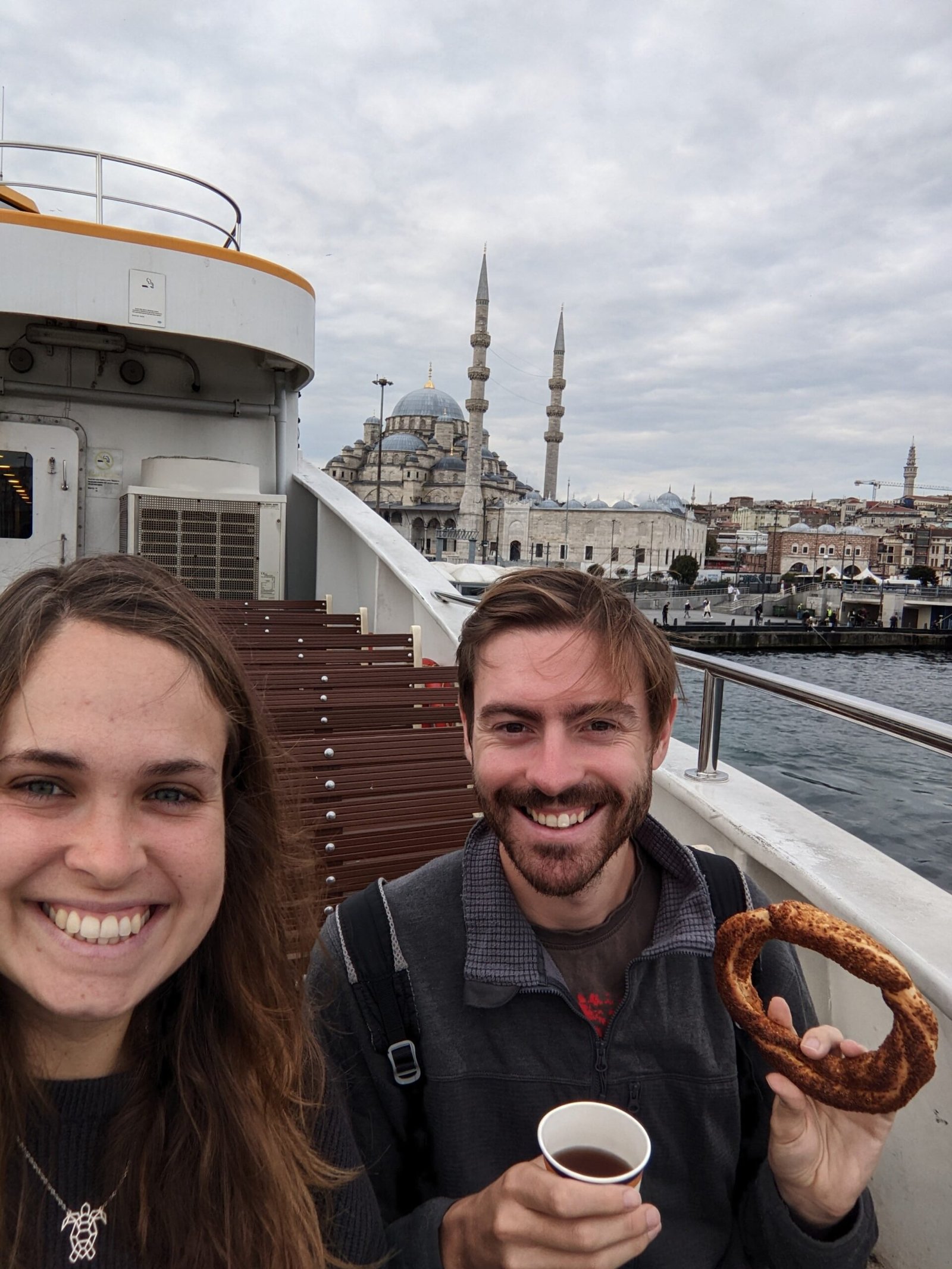
Bostana
A salad from Sanliurfa in the east of the country, it is often described as a ‘juicy’ salad because of the amount of liquid. Tomato, cucumber and onion are diced up finely and sit in a juice of lemon and pomegranate with a bit of a kick.
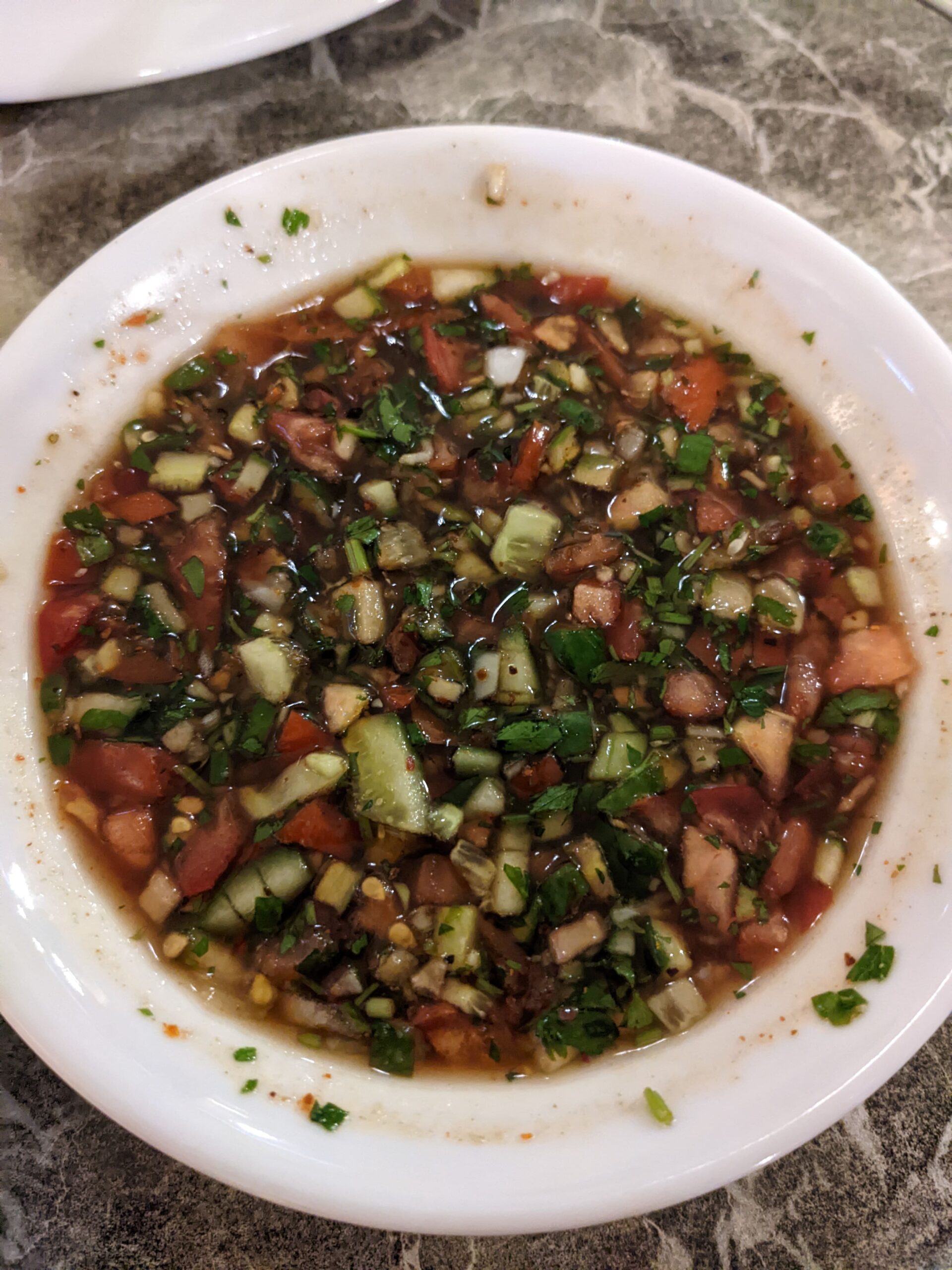
Hangel
Hangel is a dish of empty ravioli, similar to atria in Georgia. You’ll likely only see it in the north east of Turkey, close to Kars. The pasta sheets are cooked and then topped with buttery, caramelised onions and yoghurt.
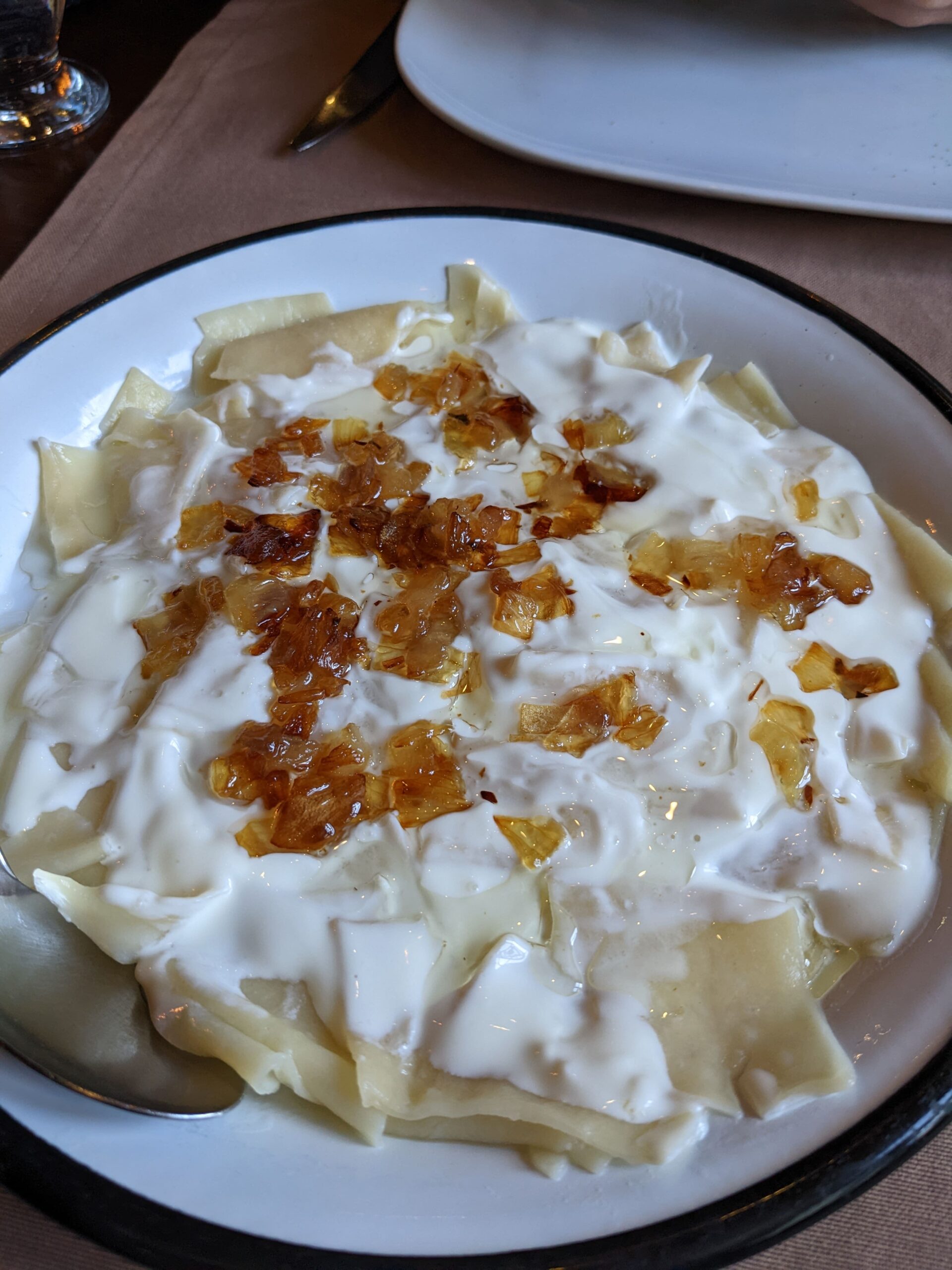
Syrian Food
Turkey shares a border with Syria in the south east of the country, and we found really tasty falafel, hummus, moutabel etc. in Gaziantep and Mardin in particular.
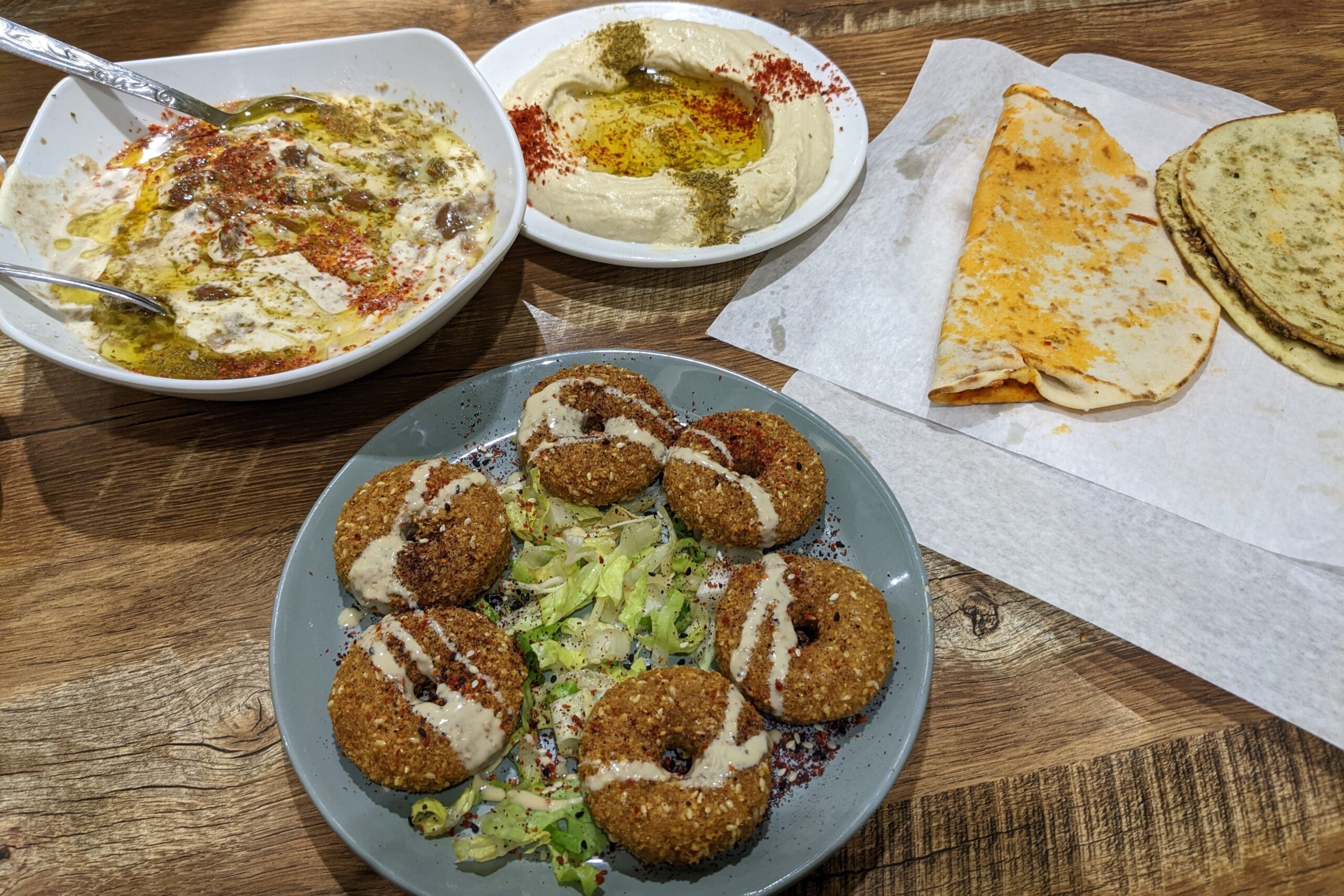
Kumpir
Who’d have thought that loaded jacket potatoes would be so popular throughout Istanbul? There are loads of Kumpir shops that are laid out a bit like a Subway. Order your potato and then have as many toppings as you like. Cheese, spicy bulgur, salads, mushrooms, whatever takes your fancy. There is a usually a flat fee for the potato and you can have as many toppings as you like.
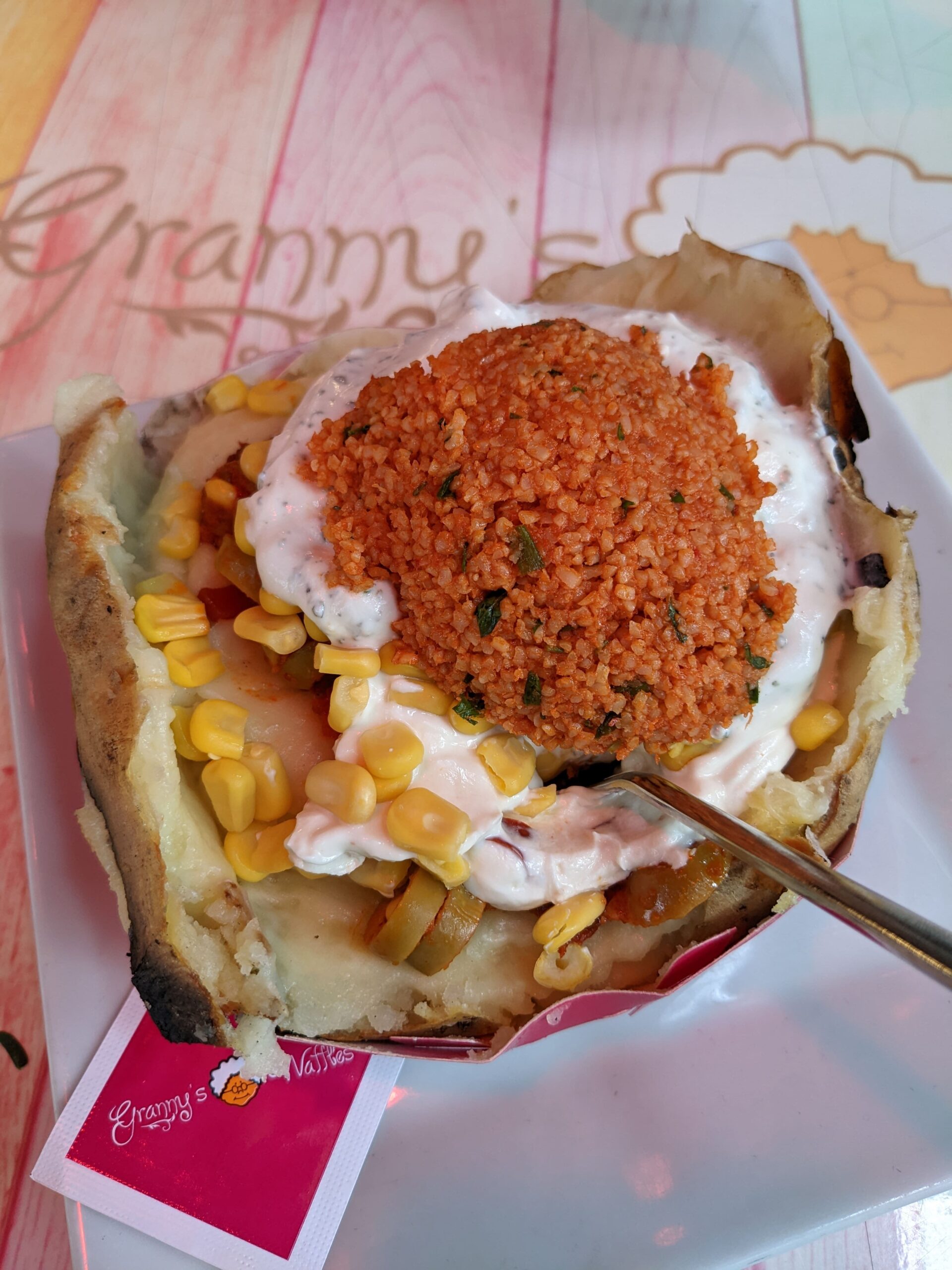
Bal-Kaymak
Bal-kaymak is an absolute beauty. A dollop of thick, rich, clotted cream sat in a sea of sticky honey. Rip off some bread and dip it in the two. Oh, so decadent.
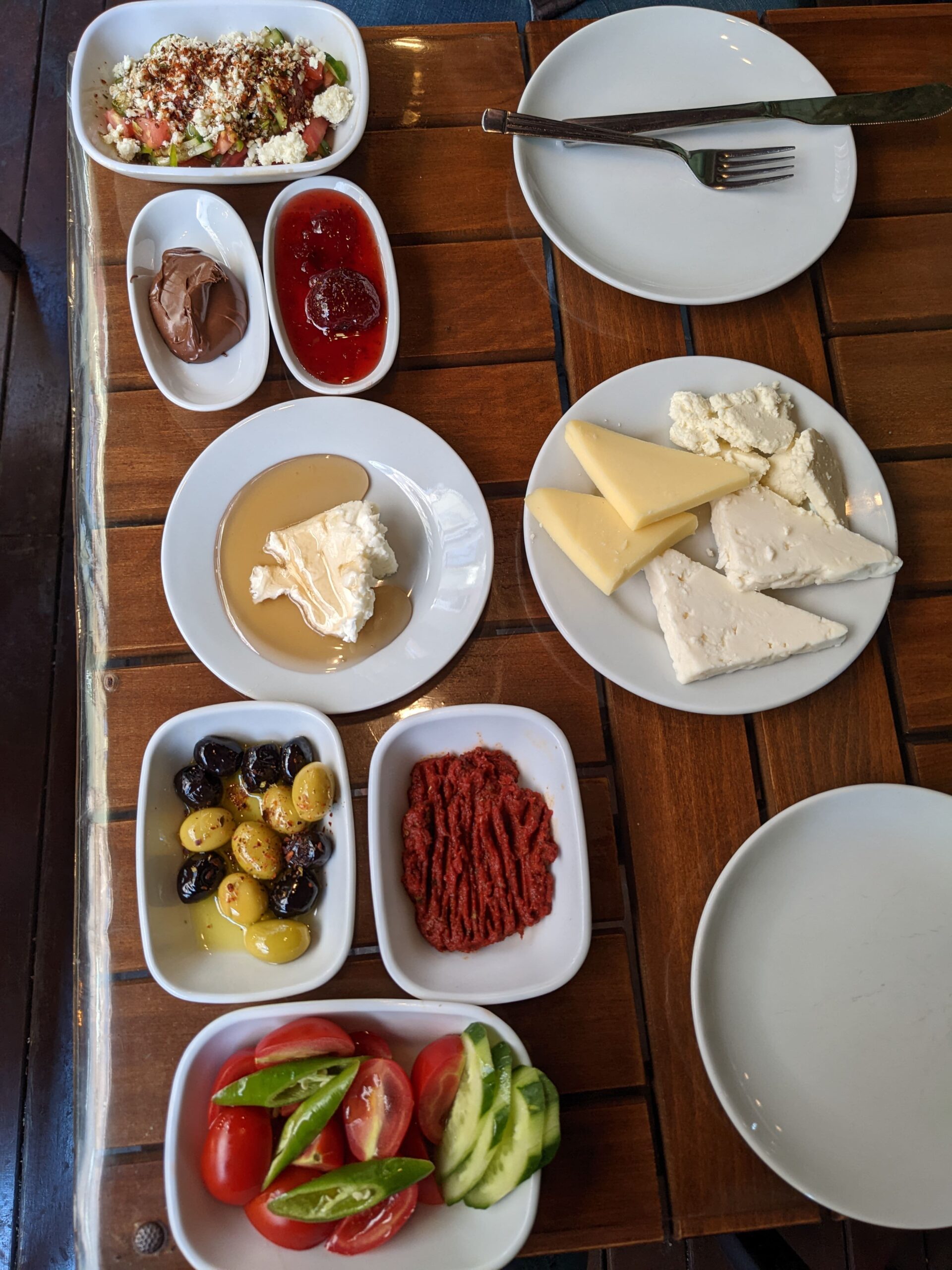
Katmer
If you are heading out to Gaziantep (which is an amazing idea by the way), you have to eat katmer. It is a seriously thin pastry that is filled with cream, pistachios and sugar. It is rich and decadent and the pistachio flavour is outrageous.
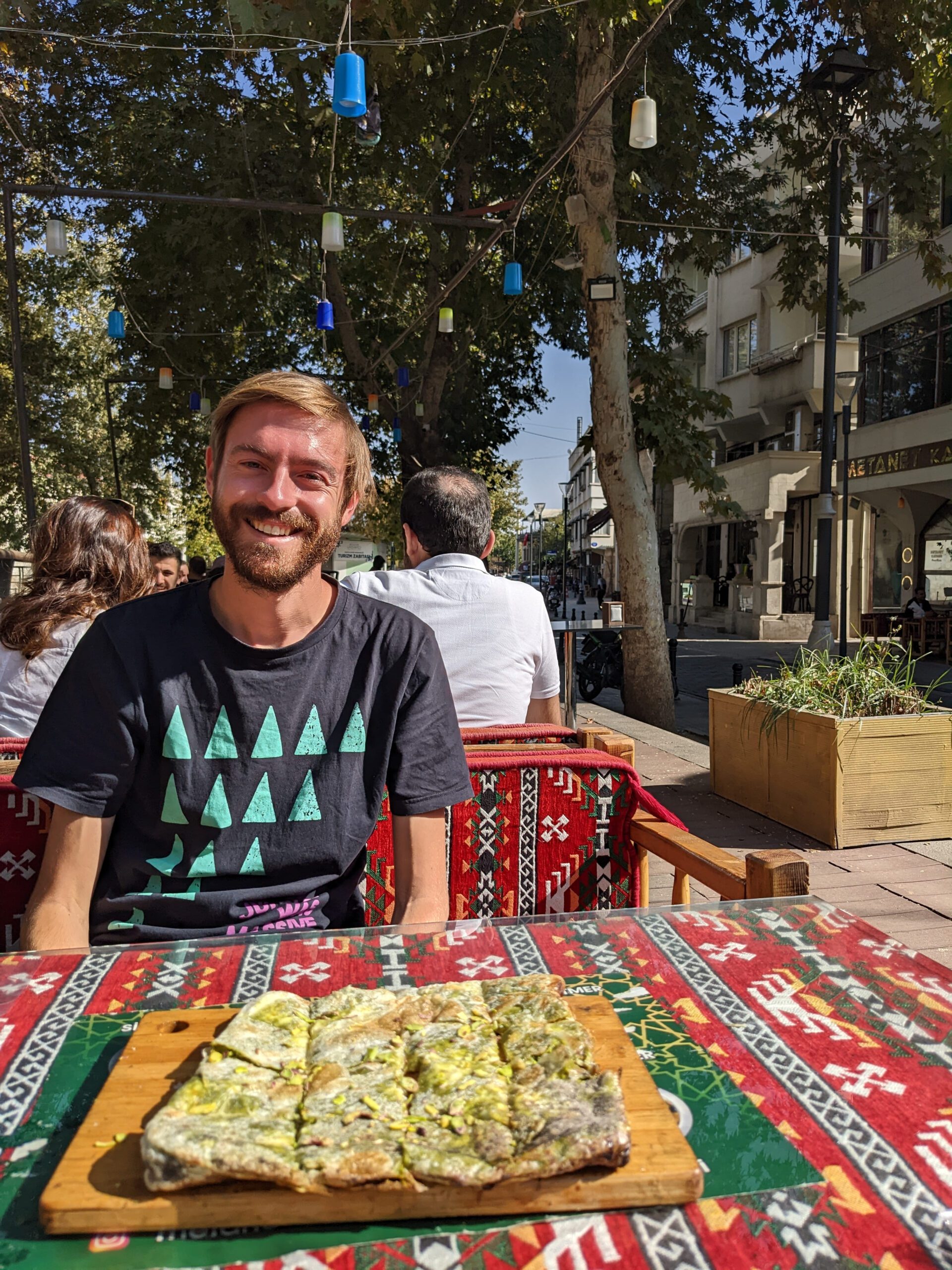
Baklava/Kadaif
This sweet treat is made of filo pastry sheets layered with nuts and drenched in syrup. Kadaif is similar, but the filo pastry is shredded into noodles. This means that the surface area for soaking up the syrup increases, and in my opinion, creates a nicer texture (though I am big fans of both!).
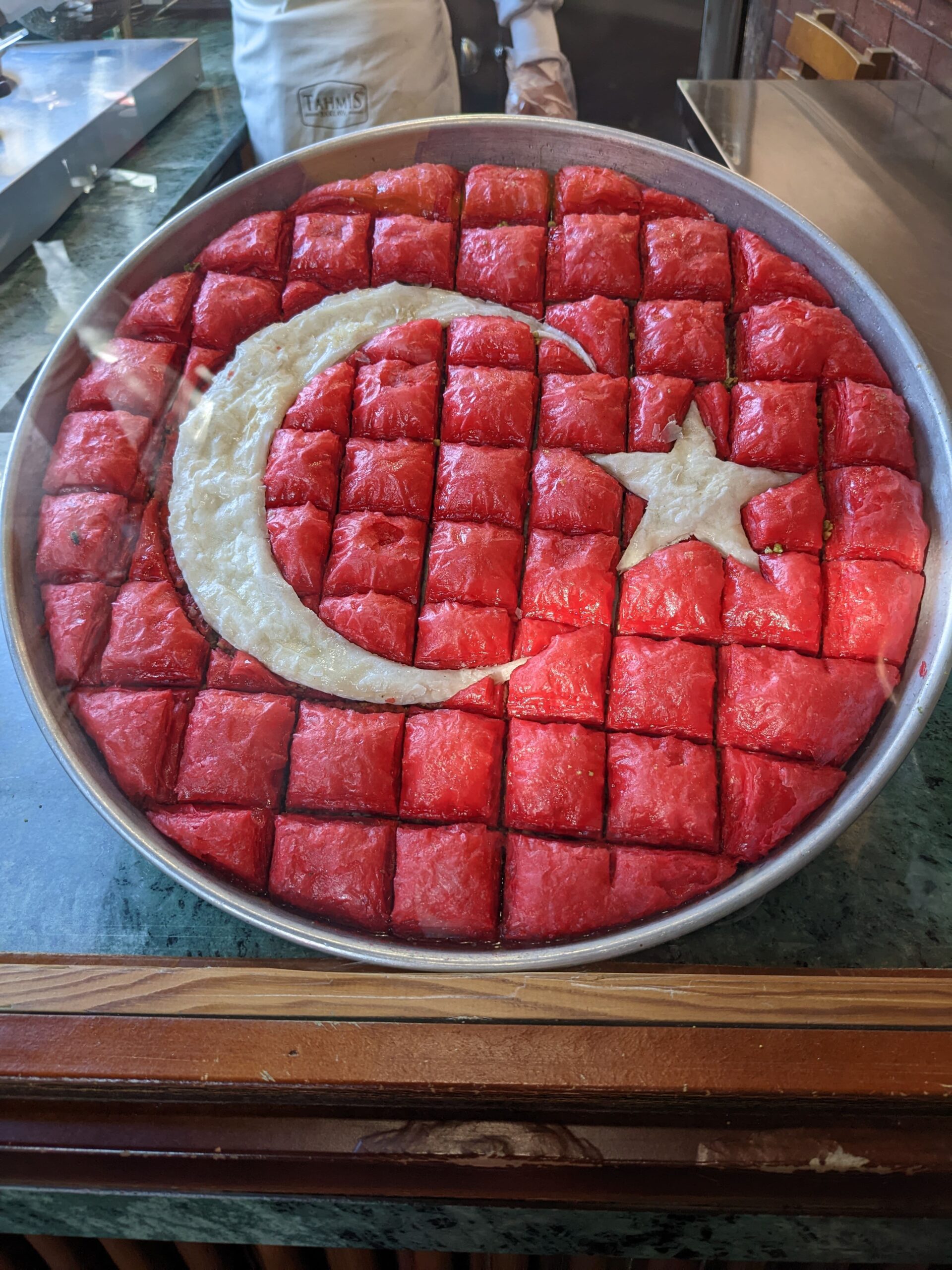
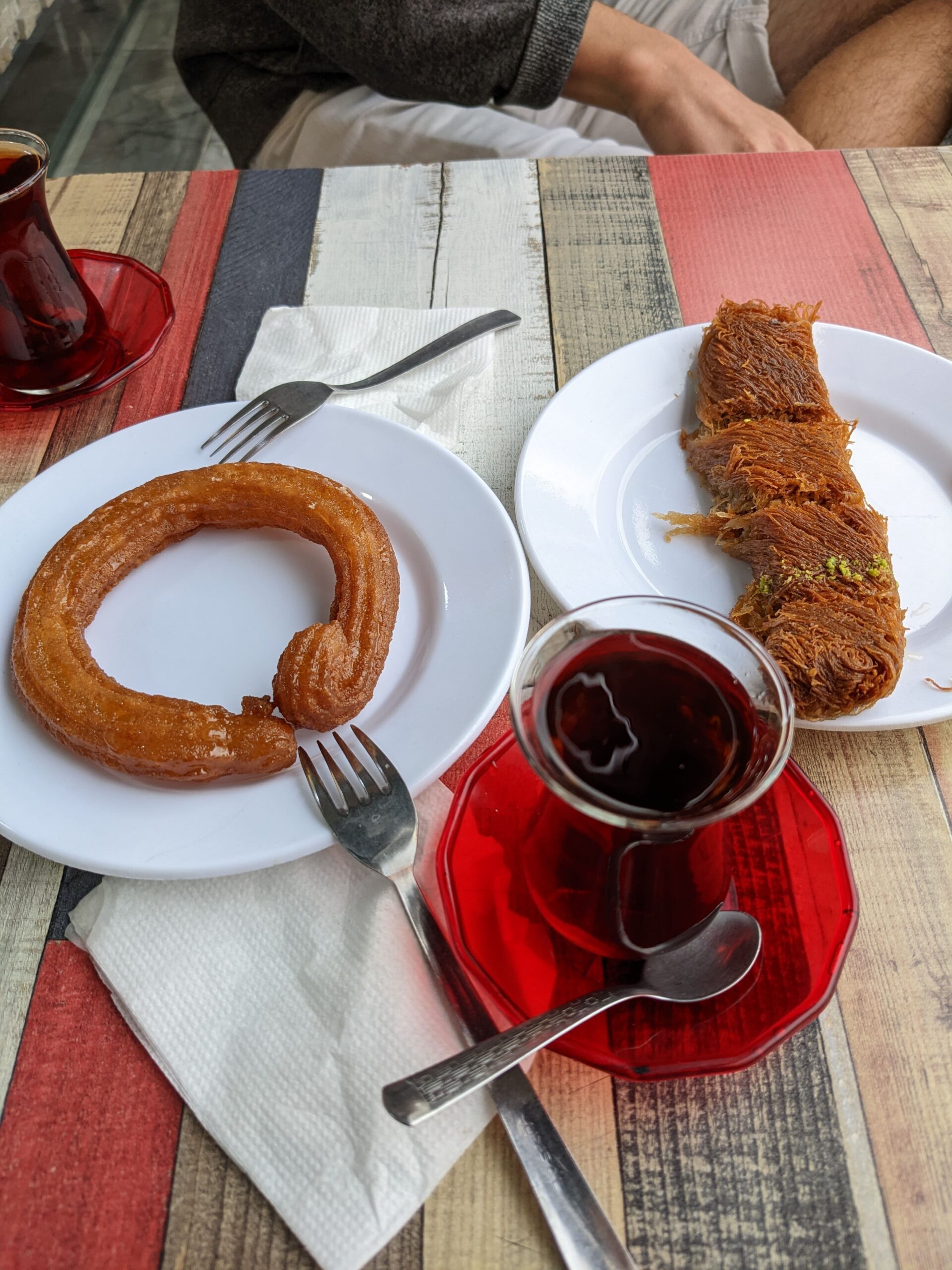
Dondurma
Turkish ice cream. You’ve likely seen the videos of the Turkish ice cream sellers messing around with people trying to buy the ice cream. Dondurma is usually so thick that you could eat it with a knife and fork if you wanted.
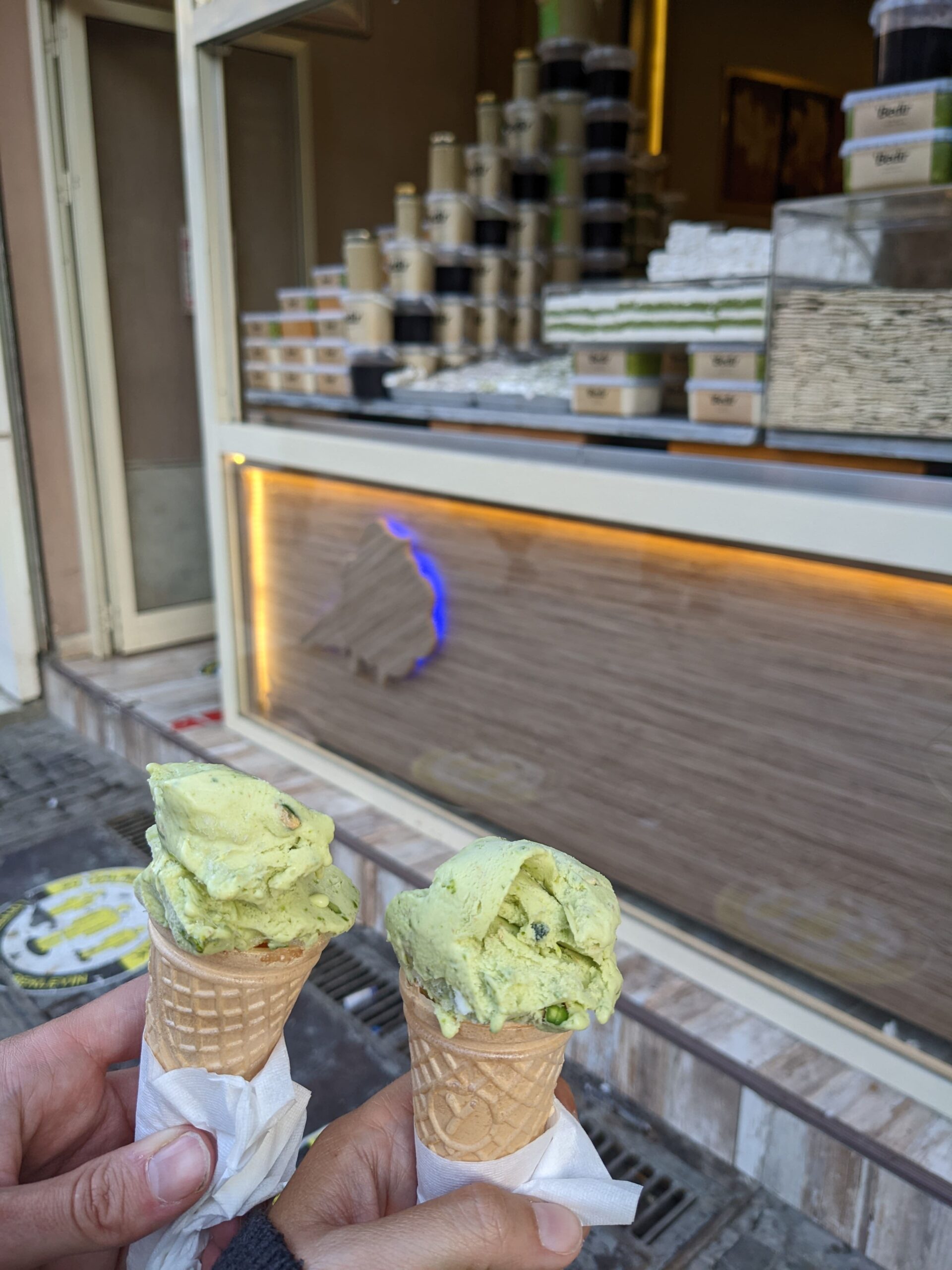
Halva Ice Cream Pudding – Dondurmali Irmik Helvasi
A layer of thick dondurma ice cream sit underneath or inside semolina halva. We had a pistachio flavoured halva and a plain halva topped with tahini and nuts. So rich and filling, but so so tasty. I had never had a flavour or texture like it before. If the seller hadn’t told me what it was, I wouldn’t have known by just tasting it!
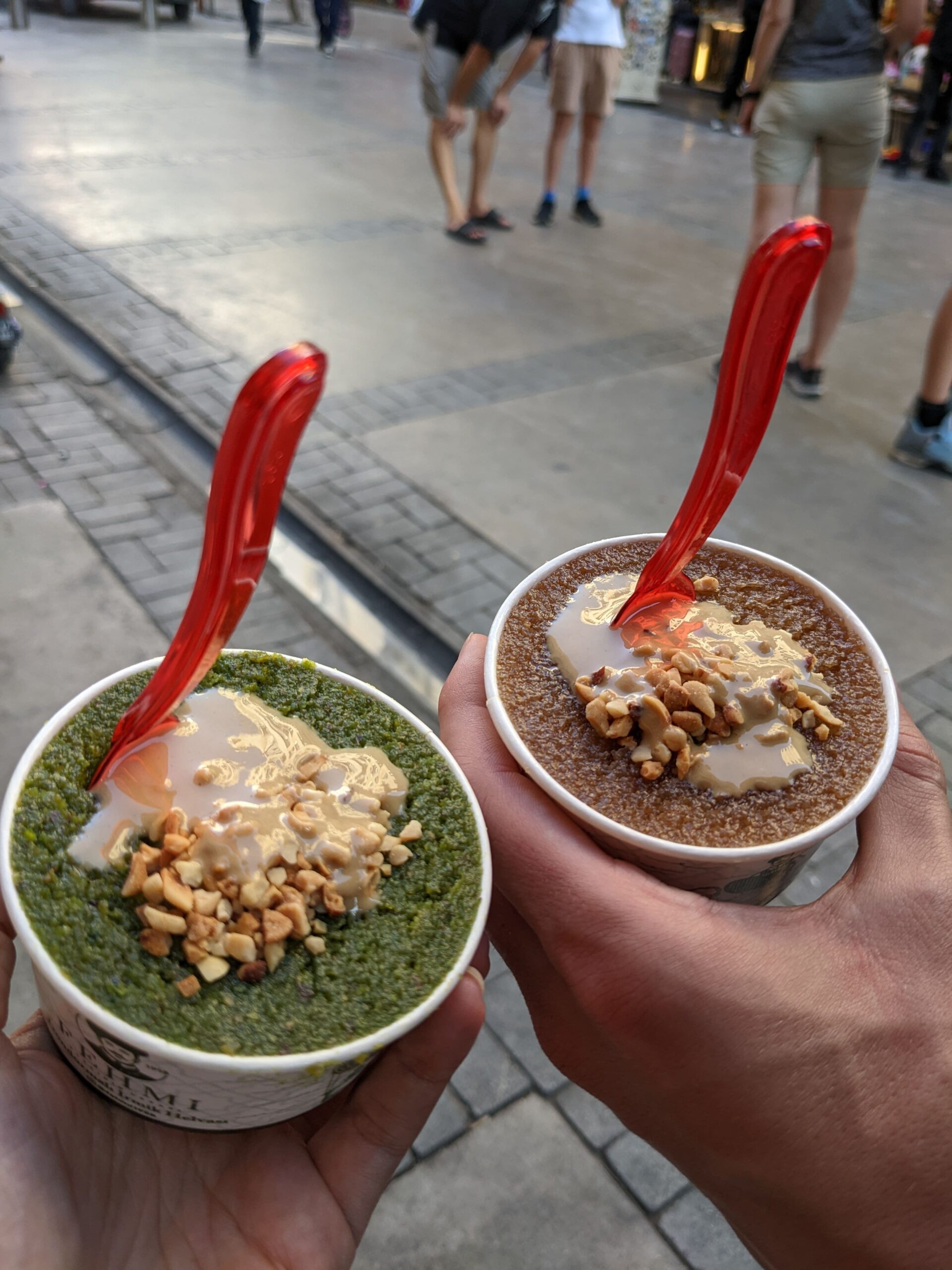
Kunefe
For me, this was a combination of textures and flavours that I hadn’t experienced before. My first taste of kunefe was in Amman, Jordan; and I wasn’t sold on it. When I saw it being sold all over Turkey, I decided to give it another go, and it started to grow on me. A savoury, stretchy cheese is served warm with crispy pastry noodles on top that have been drenched in syrup.
Sutlac
Turkish rice pudding is served all through the country. It is usually flavoured simply with vanilla, but we managed to find a rose flavoured sutlac that was really good.
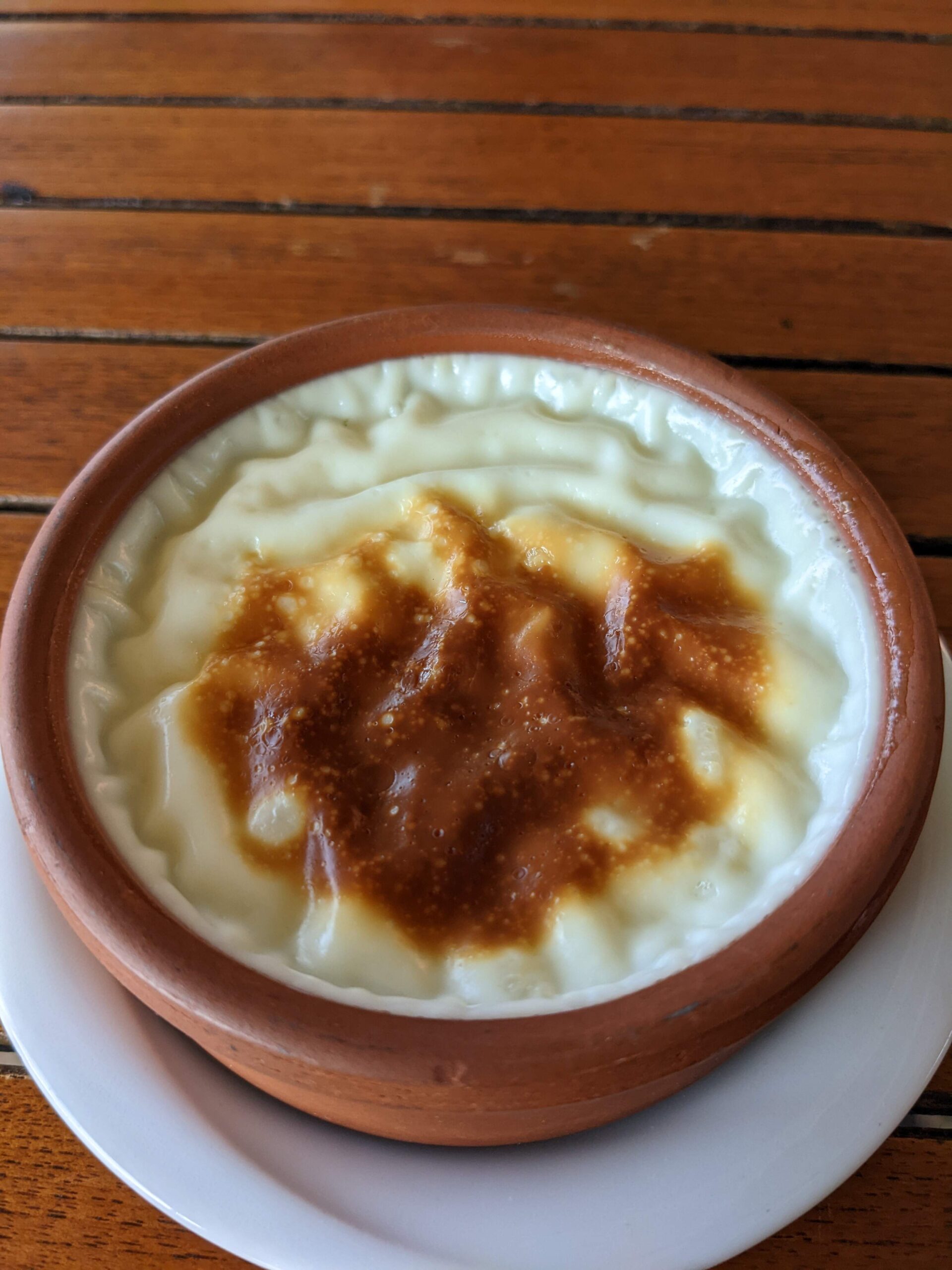
Lokma
Little deep fried donuts drenched in syrup and served with nuts sprinkled on top.
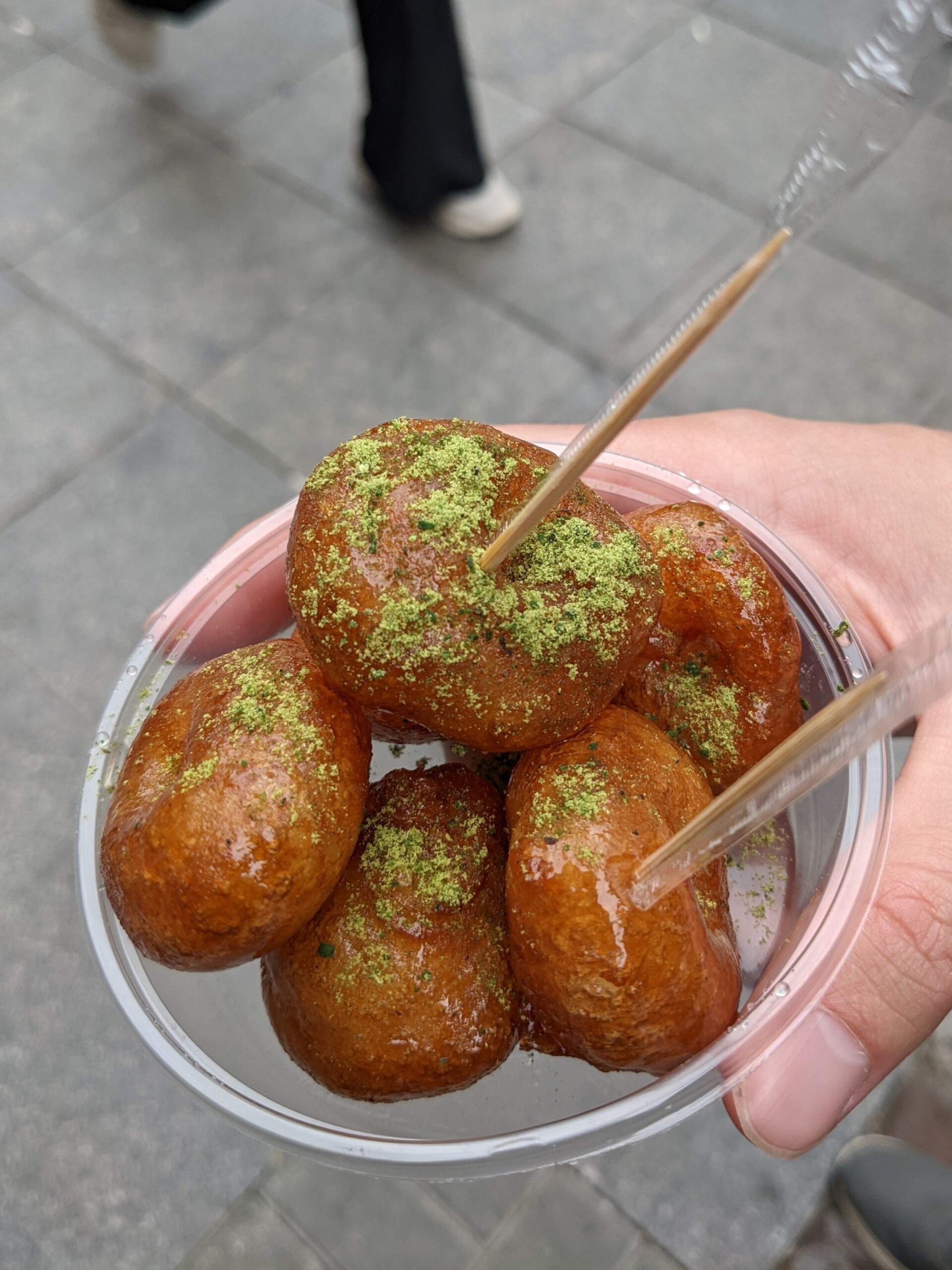
Masala Chai
In Balat’s Café Dora, an authentic Pakistani masala chai is served. We loved masala chai when we were in India, and were hopeful that this would be great too. And it is. It really is. Creamy, spicy and warming.
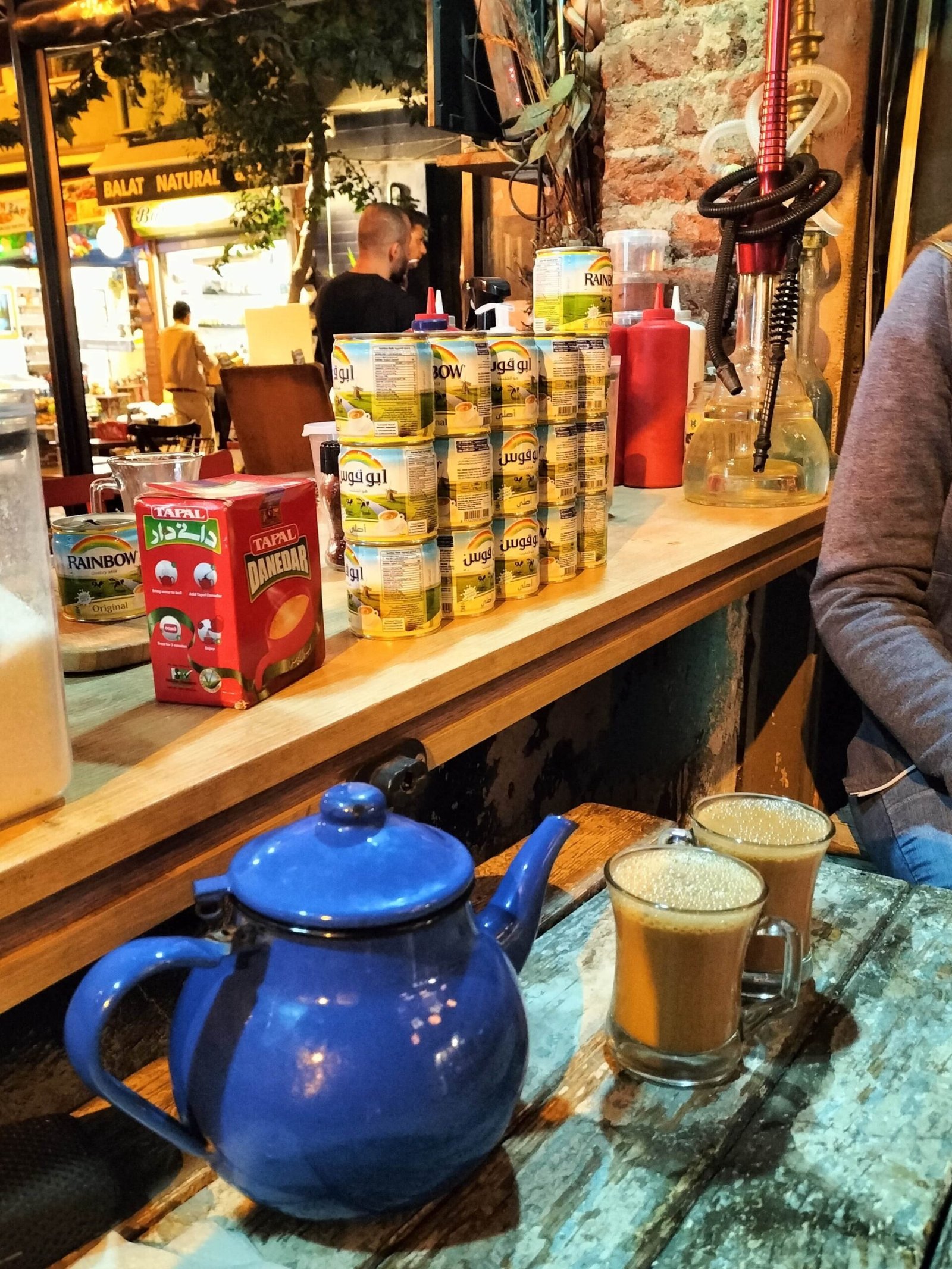
Have you tried any of this Turkish vegetarian food before? Or do you have any others that should be on this list?
I’d love to hear your thoughts, recommendations and questions.
Thanks for reading!
Like it? Save it!
